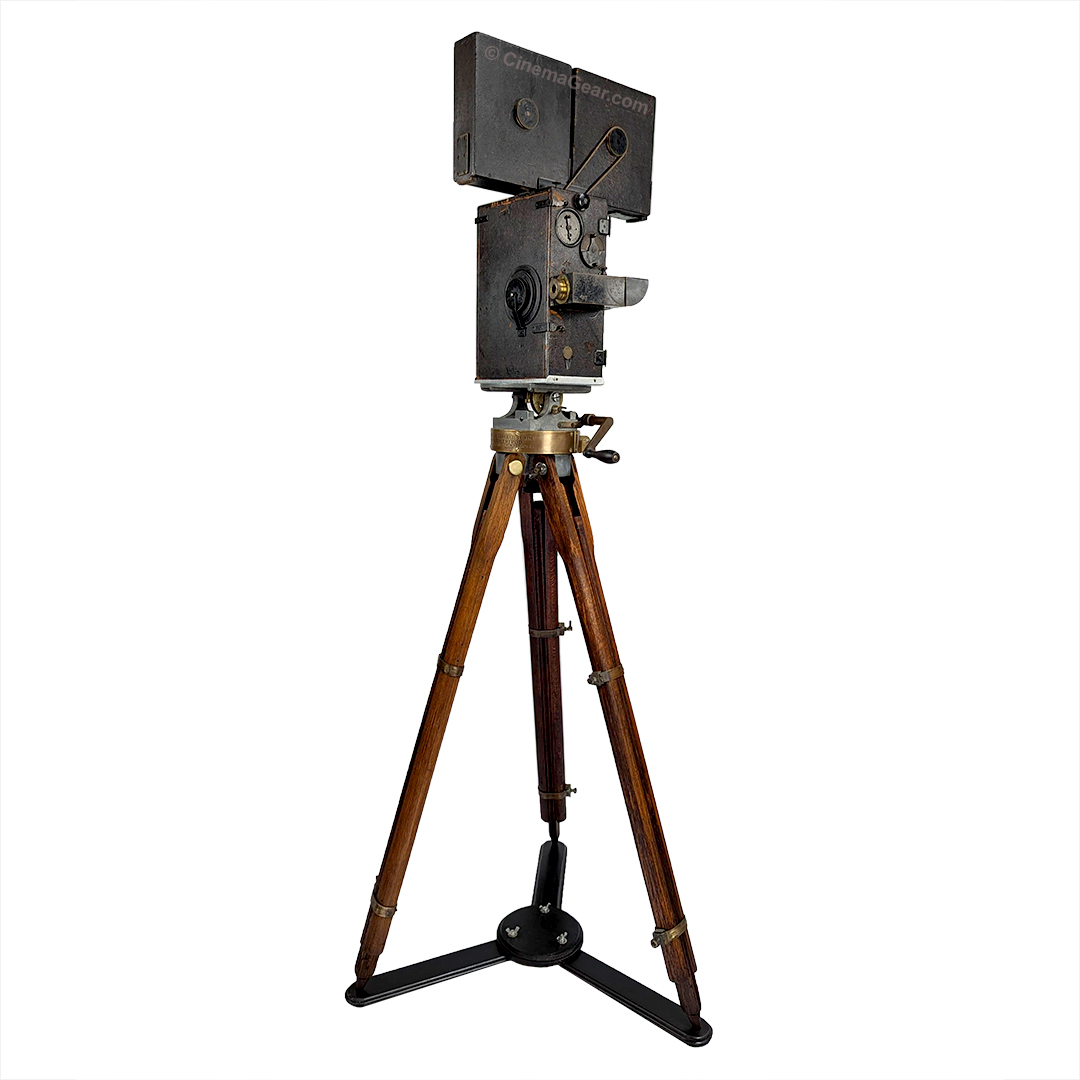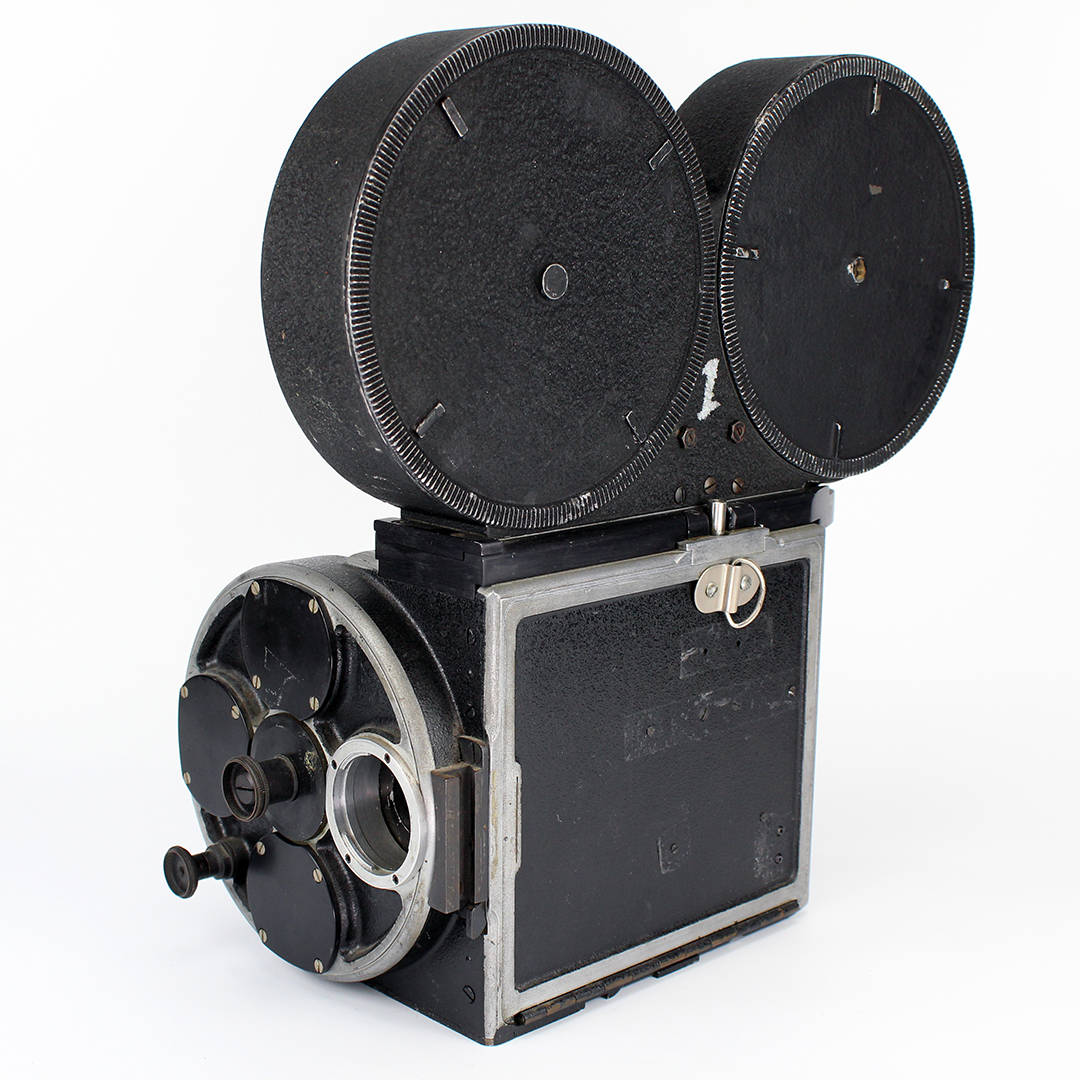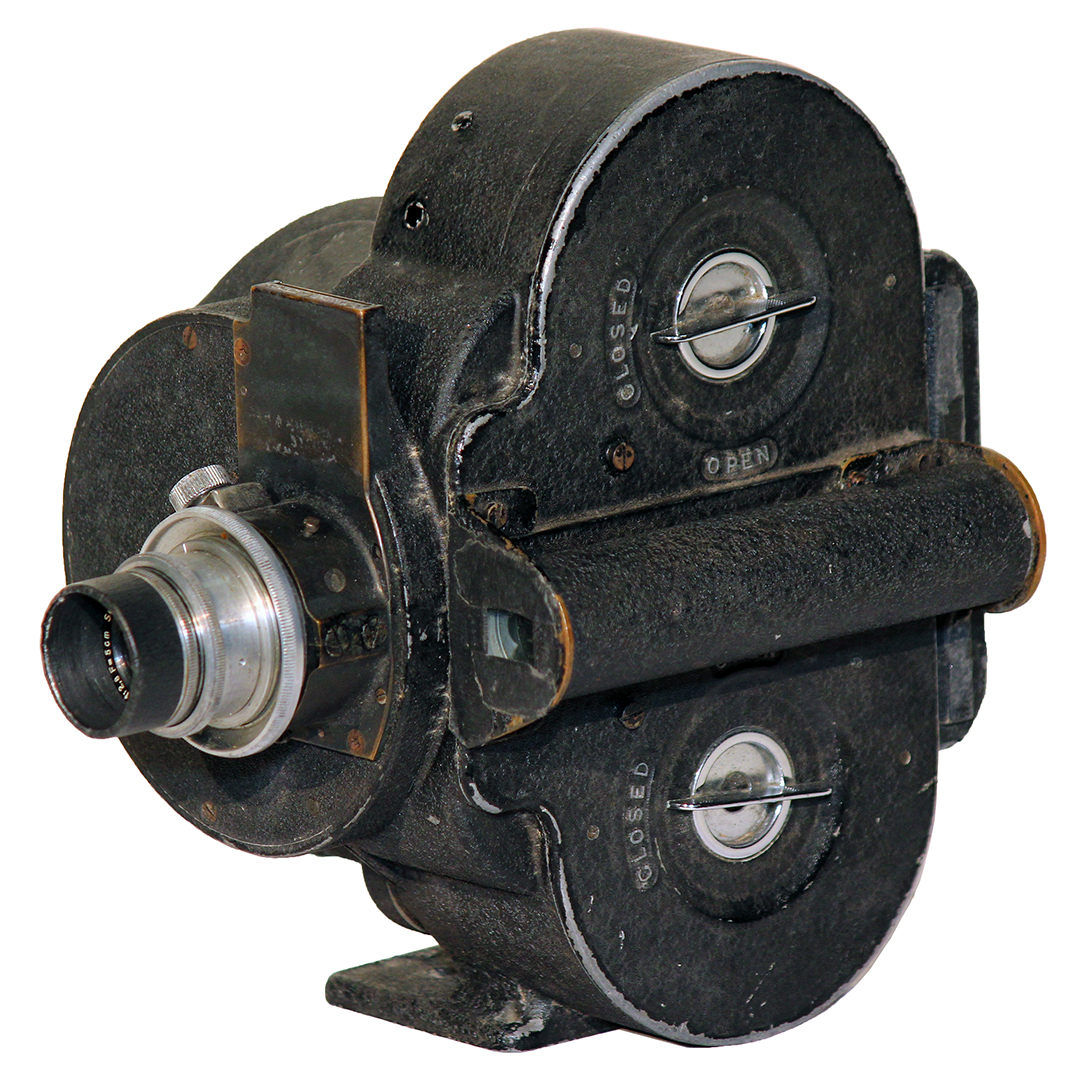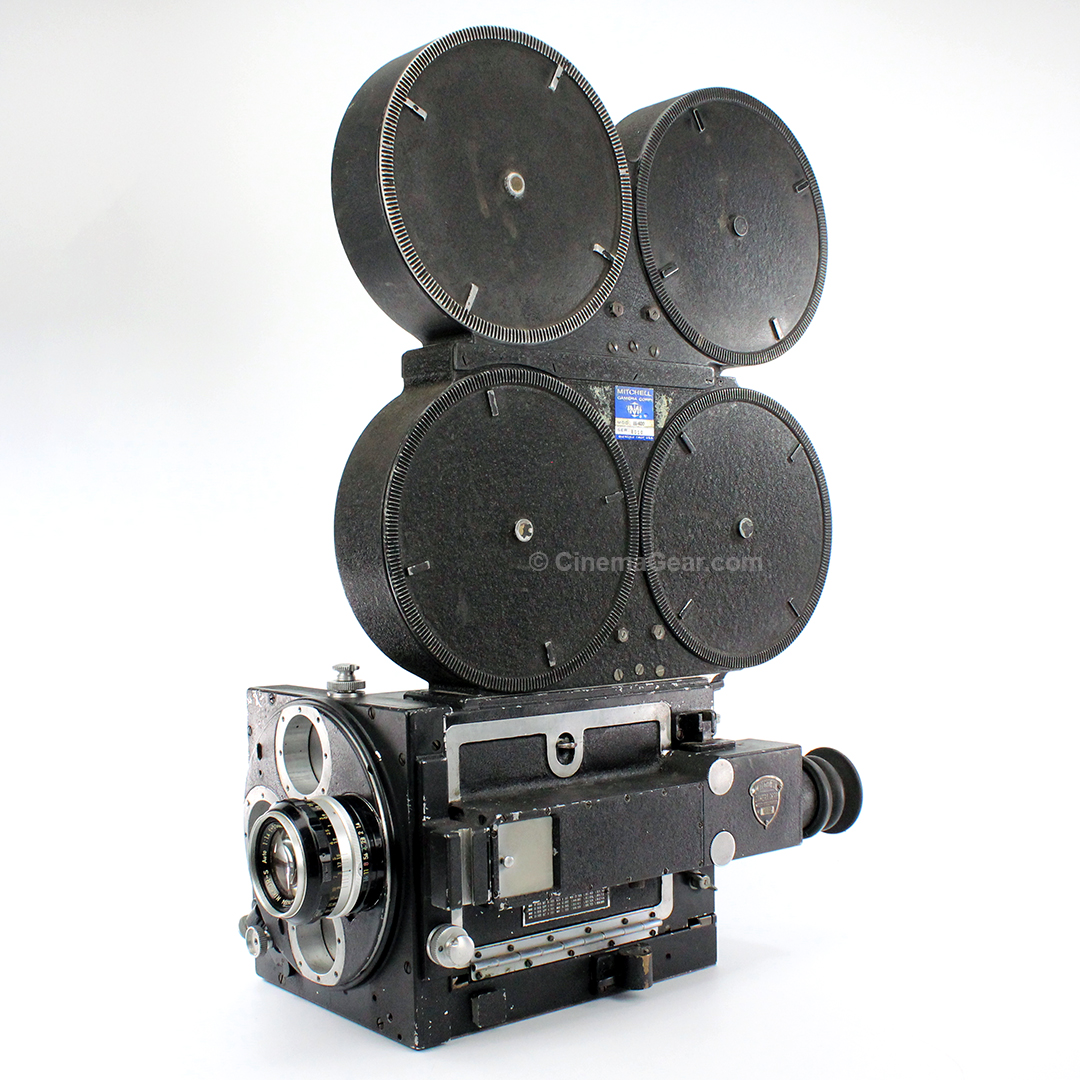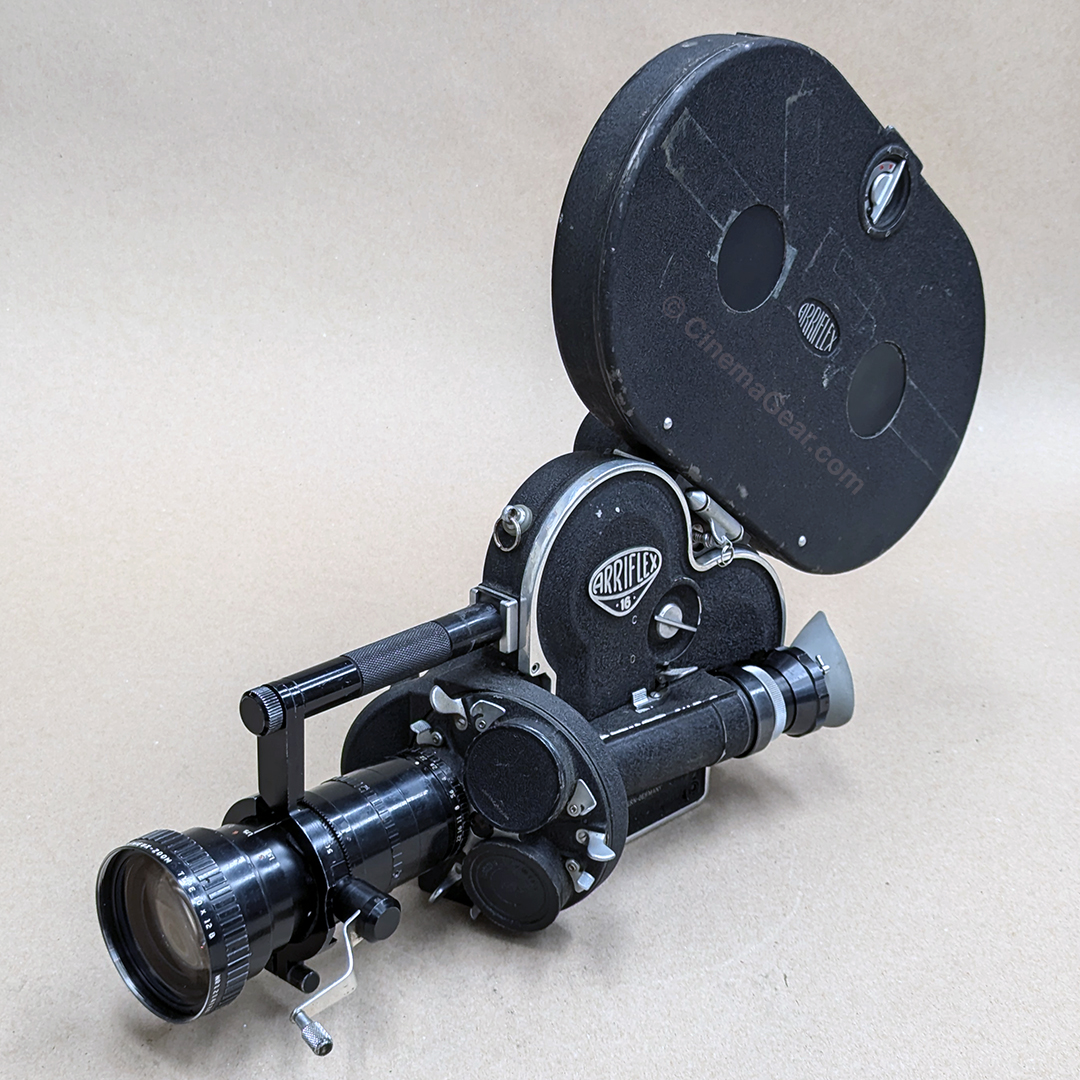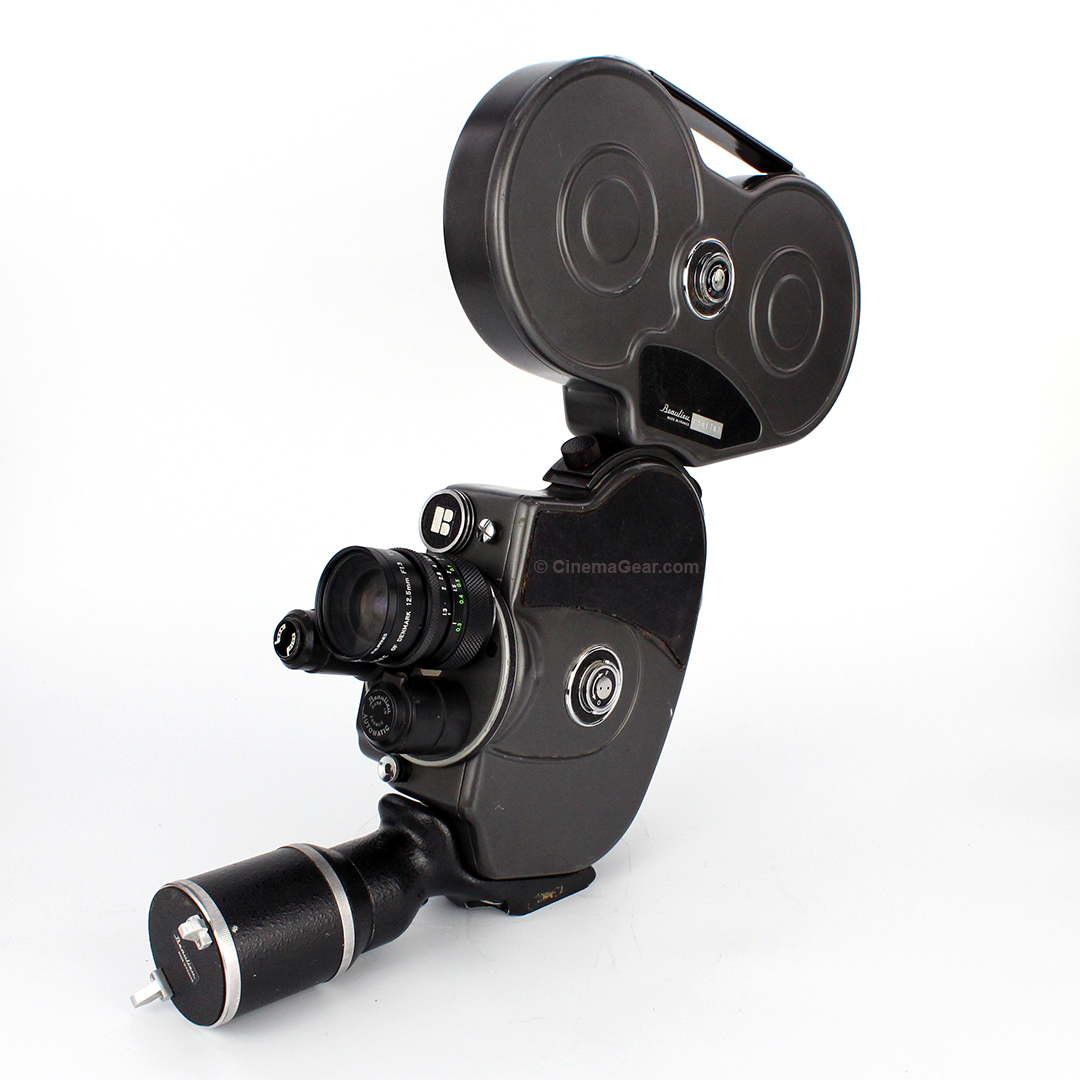
Cameras
 35mm Cameras
35mm Cameras
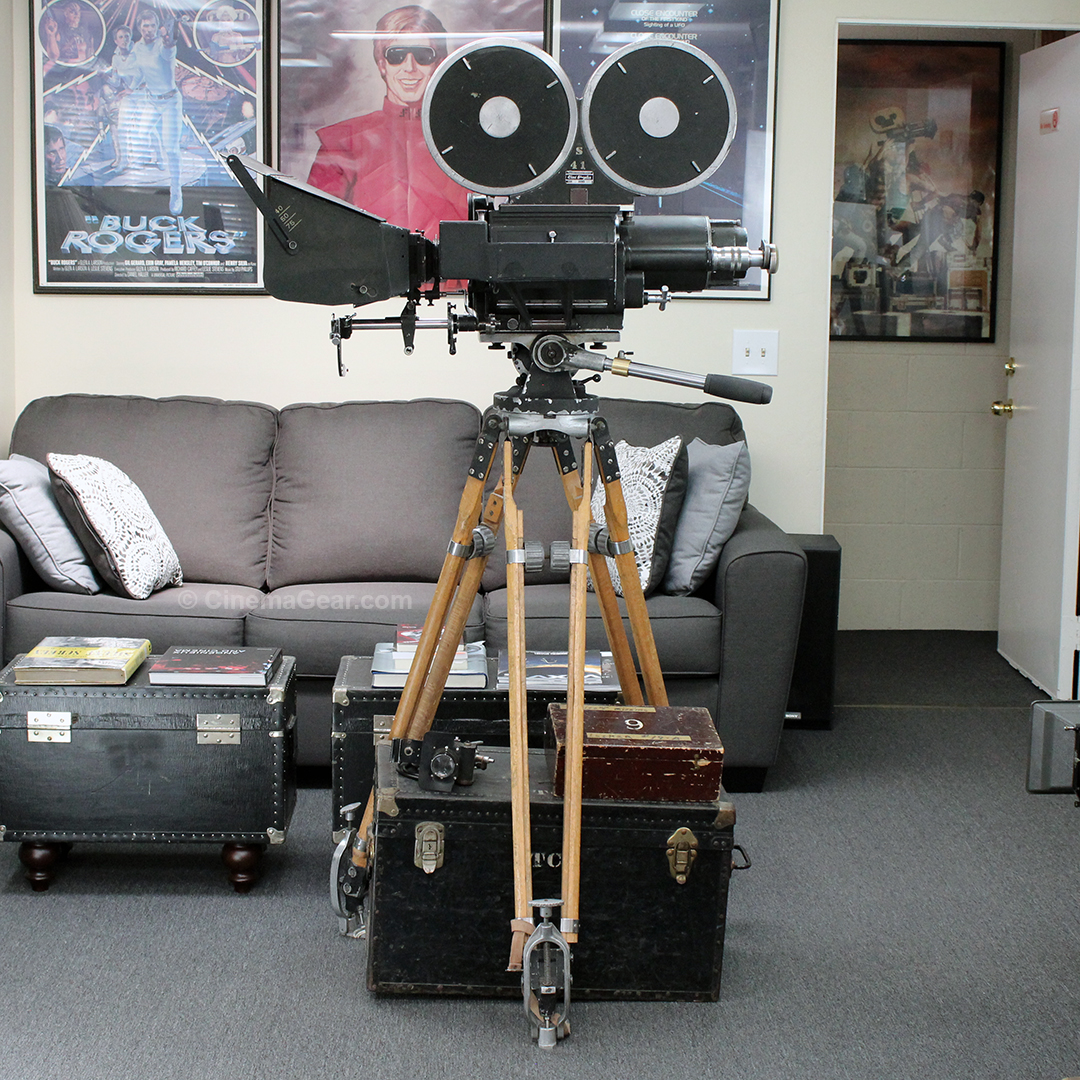
Twentieth Century-Fox Cine Simplex Camera
This Twentieth Century-Fox Cine Simplex camera, serial number 109, comes out the collection of my friend, noted cinematographer and collector John Hora. This camera has been carefully cleaned, repaired, and restored to working condition. See the restoration process here.
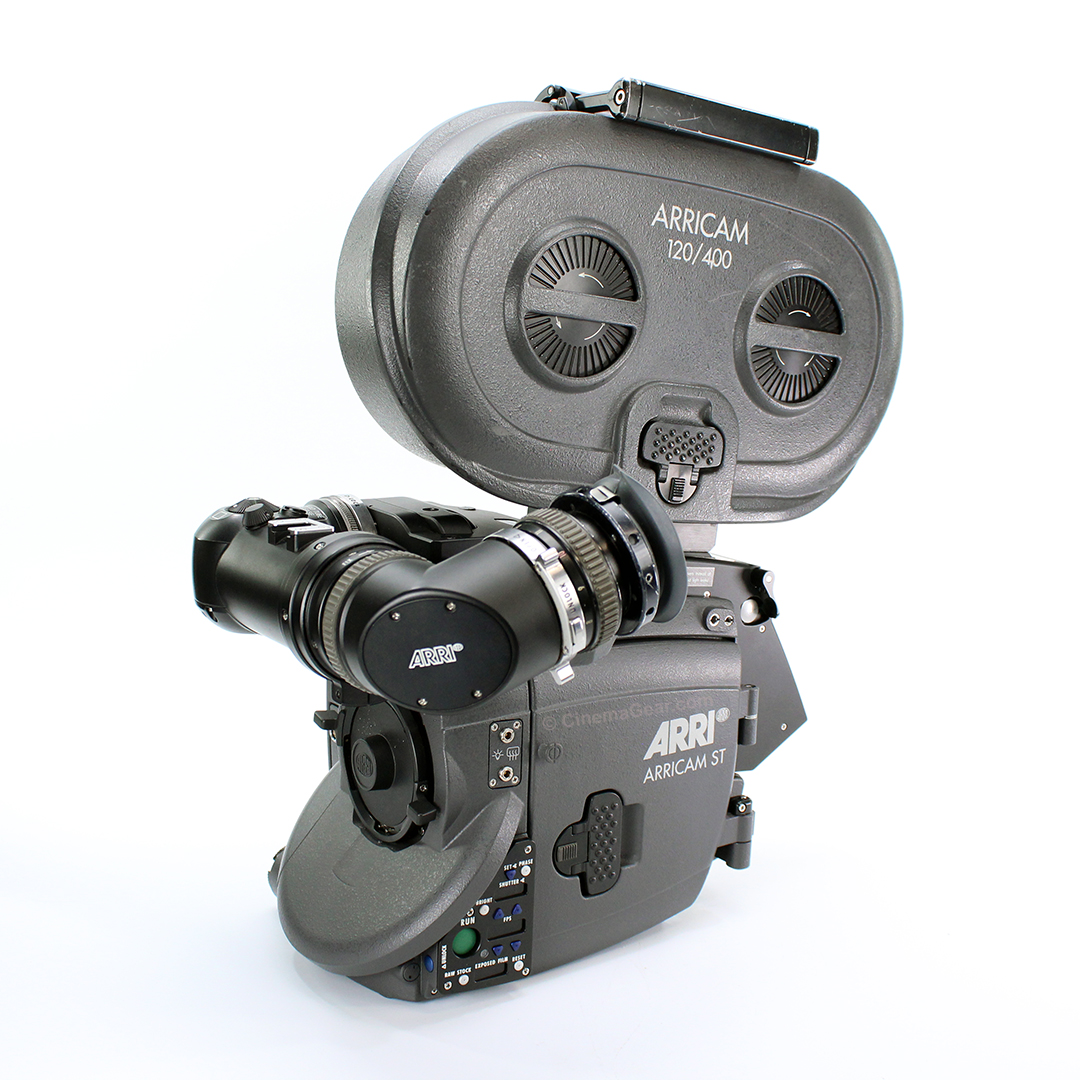
Factory New ARRICAM ST
Offered here is one of the finest motion picture film cameras ever made, the ARRICAM ST. This particular ARRICAM ST is factory brand new. It has only been out of the original Arriflex factory boxes 3 times in its life and it has never had a single frame of film shot through it. The ARRICAM ST was introduced in 2000 and, along with the ARRICAM LT, were the last silent studio film cameras ARRI released. This ARRICAM ST camera is a 35mm 4 perf sync sound camera with an electronic shutter capable of framerates from 1 to 60 fps. This package includes a factory new Studio Universal Viewfinder with both spherical and anamorphic optics, the Studio zoom long extension eyepiece, the ARRICAM Studio integrated video system (IVS), the ARRICAM Dual Port Adapter, ARRICAM Ground Glass, and ARRICAM Studio Mask Frameglow. Also included are the following previously owned serviced and tested accessories: ARRICAM 24 Volt power cable (KC-20), ARRICAM Lite Universal Eyepiece, ARRICAM heated eyecup with cable, 2 ARRICAM 120/400 Studio Magazines with cases, 2 ARRICAM 300/1000 Studio magazines with cases, and a custom Innerspace camera case with wheels and handle.

Original Slate from "How The West Was Won" (1962)
Shown here is an original 3-panel slate from the epic western adventure “How the West Was Won” (1962) shot in Cinerama out of the collection of veteran cinematographer John Hora. Cinerama was a widescreen format that made use of an amazing piece of engineering that incorporated 3 separate film transports and lens assemblies to shoot 3 synchronized film panels at the same time. These were later projected simultaneously to make up the widescreen image. “How the West Was Won”, produced by MGM, was directed by John Ford, Henry Hathaway, and George Marshall (who appears on this slate) and starred James Stewart, John Wayne, Gregory Peck, Henry Fonda, and Debbie Reynolds, among many others. A very cool piece of movie history!
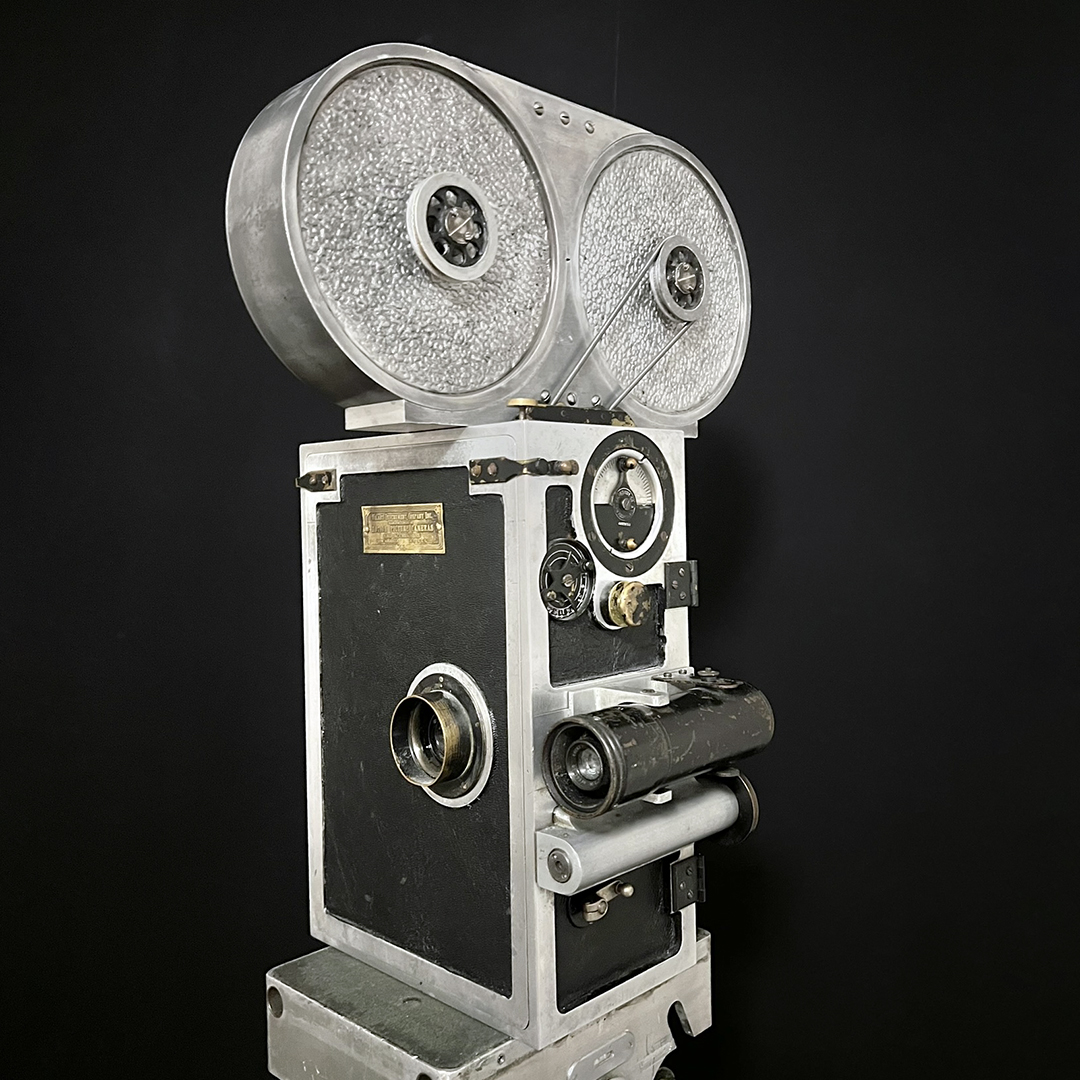
Wilart Professional Camera
I am delighted to share with you all this fascinating, extremely rare, ca. 1921 Wilart Camera restored by my good friend Michael Madden. This camera features durable, all-metal construction, an automatic shutter, and behind-the-lens slots for split screen, spyglass, keyhole, and other effects masks. The camera also features an ingenious critical focusing tube that allows the cinematographer to view and compose through a single frame of film without fogging any of the adjacent frames. Additional features include footage and frame counters, a micrometer-based focus control that synced focus between the finder lens and the taking lens, automatic light traps on the magazine, along with a variety of other forward thinking features unique to the Wilart camera.
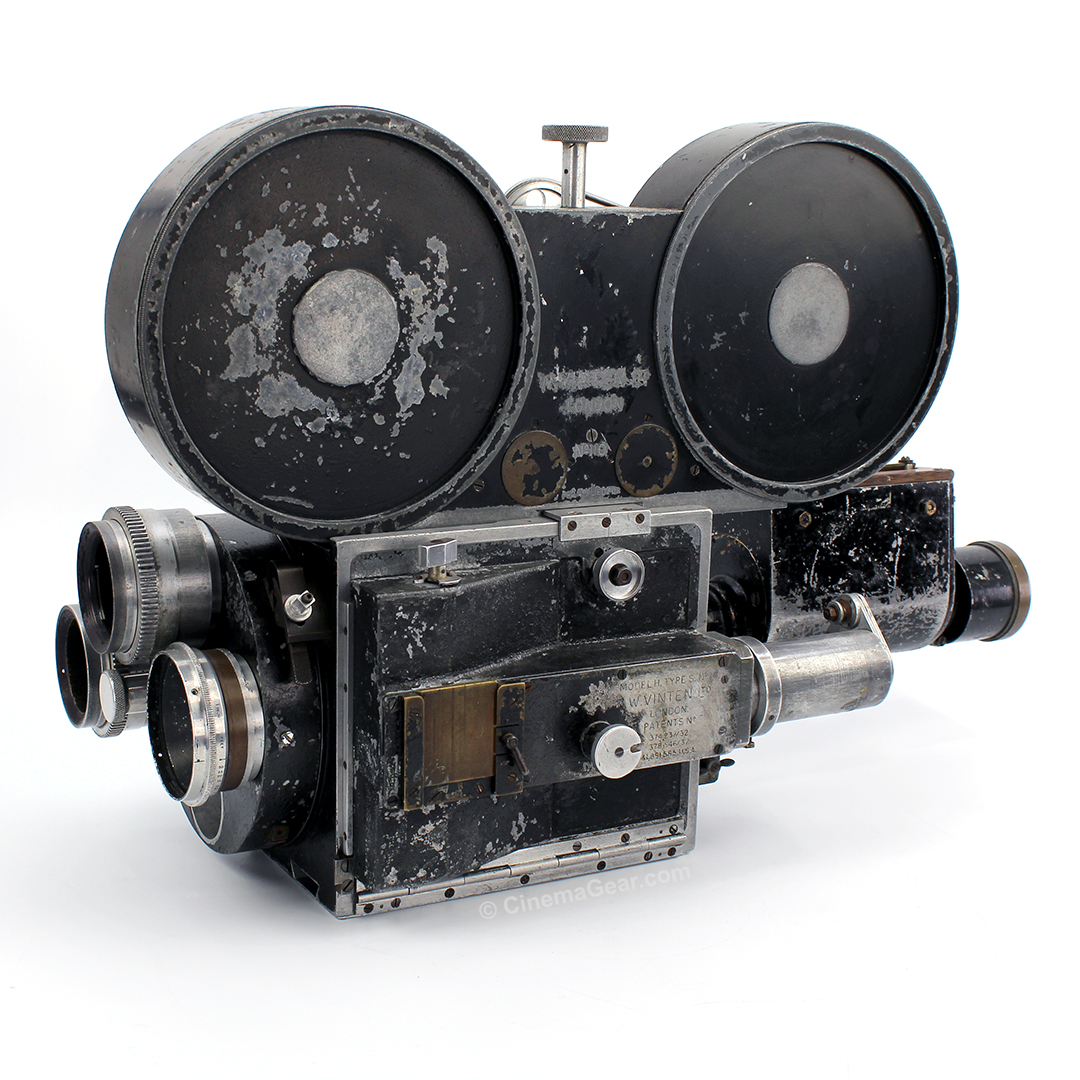
Vinten model H
This Vinten Model H camera has been meticulously cleaned, serviced, and returned to working condition. Comes complete with two 400' magazines, a motor, and three lenses (1ea. - Cooke Speed Panchro 1in [25mm] f2; 1ea. - Cooke Speed Panchro 35mm f2; 1ea. - Cooke Speed Panchro 50mm f2).
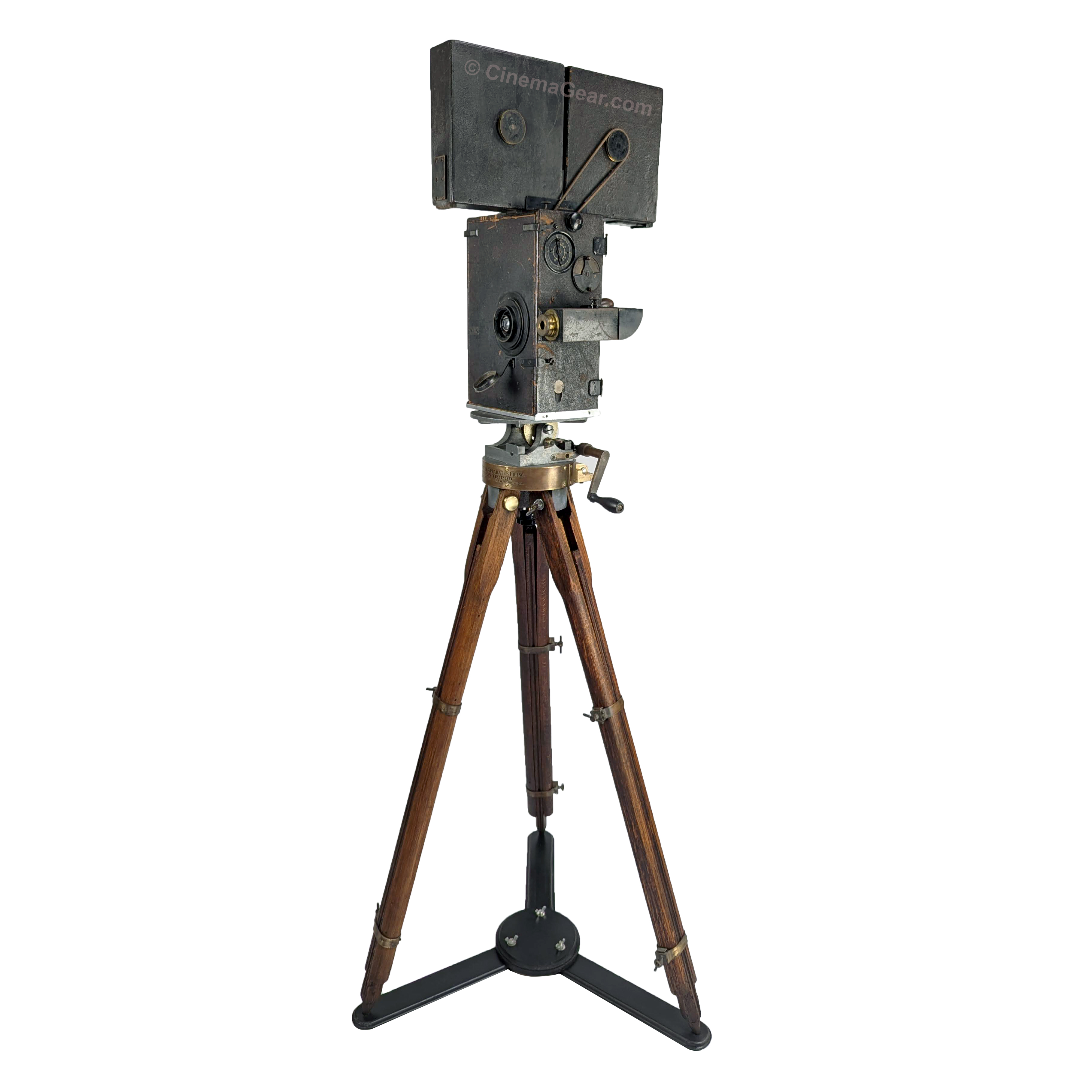
Pathé Professional Camera with Motion Picture Apparatus Company Tripod
From the infancy of the motion picture industry through the first world war, Pathé Freres, established in Paris, France in 1896 by brothers Charles, Émile, Théophile, and Jacques, was the largest producer of films and filmmaking equipment in the world. The brothers got their start in the phonograph business, and later expanded into the emerging film industry. The Pathé Professional camera was available commercially sometime in 1908 and dominated the industry until World War I severely impacted Pathé’s export market. In late 2024 I was absolutely thrilled when a client entrusted this Pathé camera into my care for restoration and to find it a new, permanent home. We estimate that this camera was made sometime around 1915, so it seemed a perfect match for a similar vintage tripod made by the Motion Picture Apparatus Company. The camera is now complete and ready to find a new, loving home!

Arriflex BL 2 camera with Cooke Speed Panchro lenses
Following up on the successful introduction of the Arriflex 35mm BL camera, the ARRI BL 2 improved on the original design by adding a brighter viewfinder, video tap optics, digital footage/frame counter and tachometer, and making the operation of the camera quieter while keeping the form factor small and light. The ARRI BL 2 was a smash success for ARRI, as it was one of the earliest sound silent, hand-held, pin registered cameras on the market. The BL series of cameras embraced a versatile design philosophy, with the camera being easily used hand-held or mounted on a geared head. Package includes 3 Cooke Speed Panchro lenses.
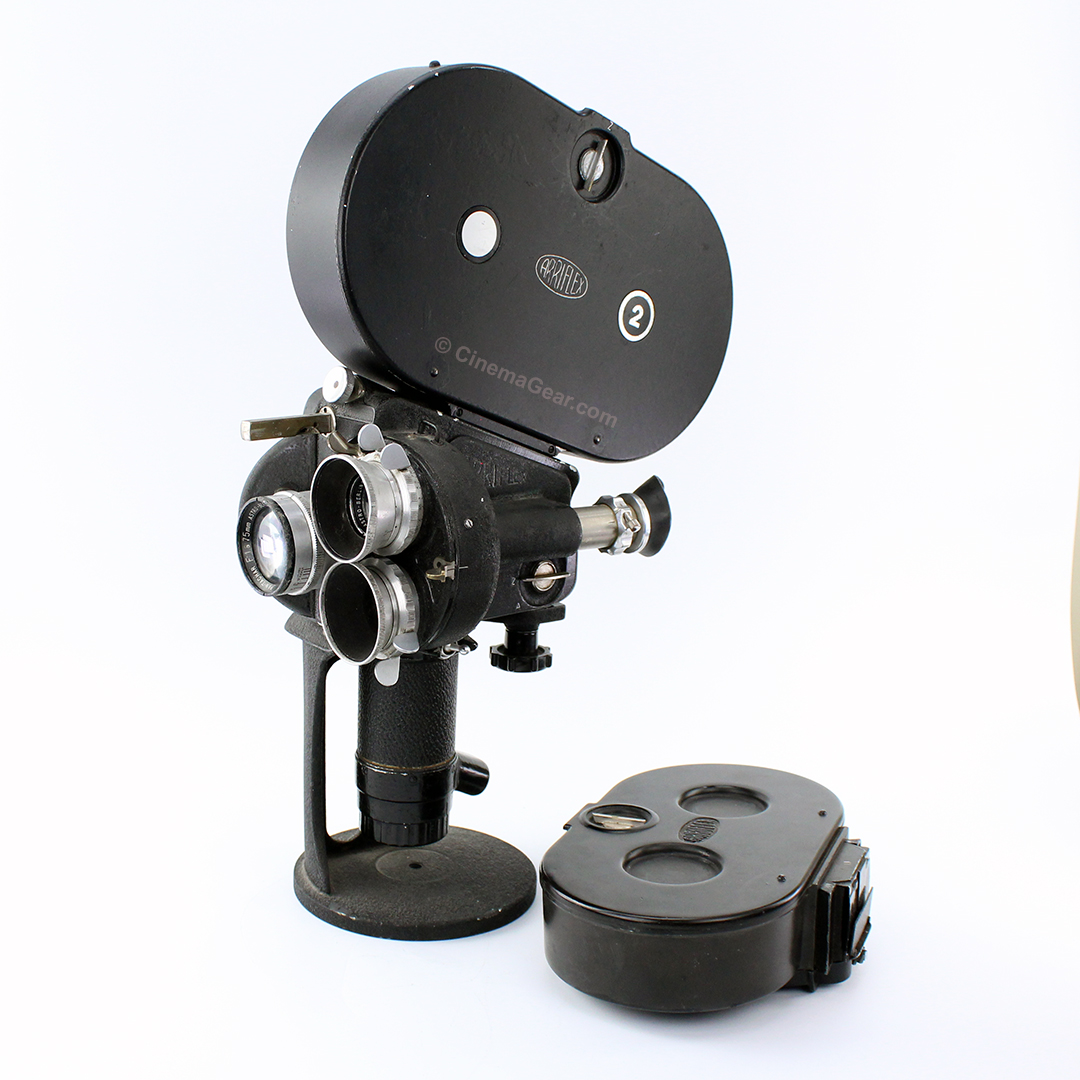
Arriflex 35 #807
Coming Soon! This original ARRI 35 camera, serial number 807, comes from the collection of five-time Emmy Award winning photojournalist, author, and owner of video rental firm Videosmith, Steven Trent Smith. The camera comes complete with one 400' magazine, two 200' magazines, a variable speed motor, three Astro Berlin lenses, and an original case. This camera appears to be in very nice used condition and is currently undergoing cleaning and servicing. The ancestor of the popular, Academy Award Winning ARRI 2B and 2C, this ARRI 35 is a perfect addition to any camera collection.
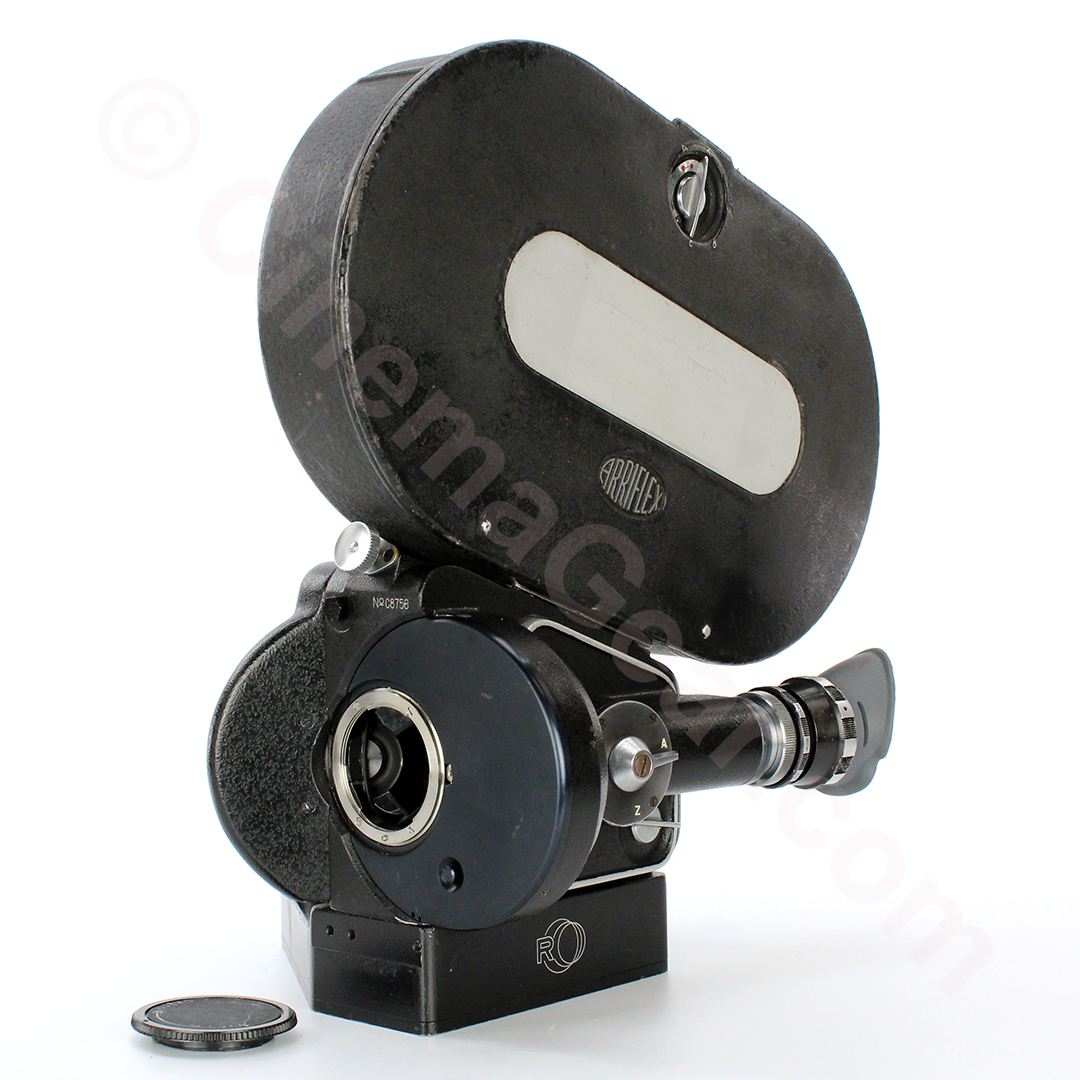
Arriflex 2C with Nikon hard front
Arriflex 35 II C spinning mirror reflex 35mm camera with a custom Nikon hard front conversion and a flatbase with a variable speed motor. The camera comes complete with a 400’ magazine. This camera has been fully cleaned and serviced and is ready to shoot your next project.
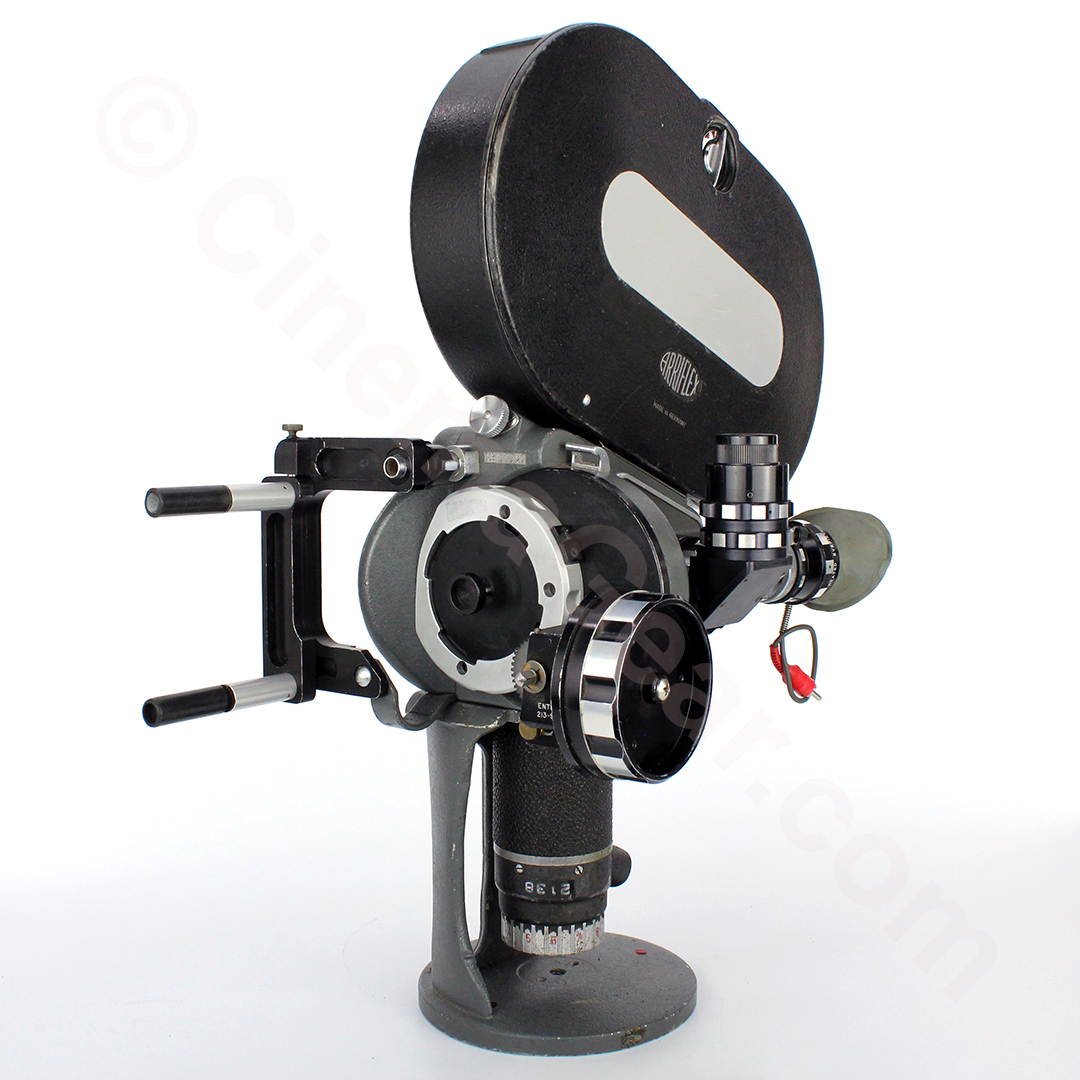
Arriflex 2C
Arriflex 35 II C spinning mirror reflex Super 35mm camera with a JAR hard front conversion with interchangeable Nikon and Panavision lens mounts and an ARRI high hat. The camera also features a JAR follow focus, swing-away matte box support, and video tap optics, and eyepiece heater. Sadly, no matte box or video tap camera are included. To complete the package, the camera also includes a 400’ magazine and a variable speed motor.
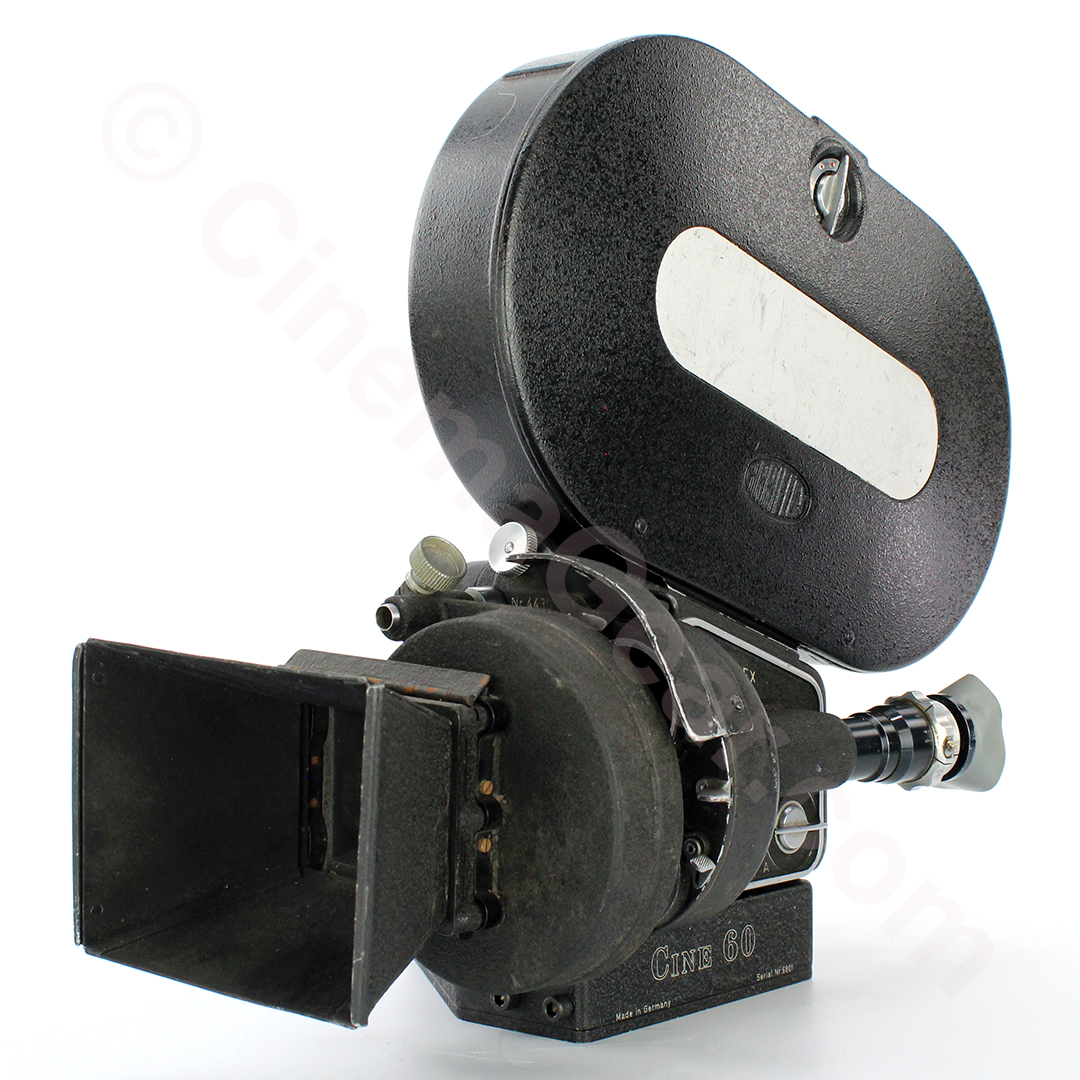
Arriflex 2B
Arriflex 35 II B spinning mirror reflex 35mm camera with standard three position turret featuring ARRI standard lens mounts and sitting on a Cine 60 flatbase with a variable speed motor. The camera comes complete with a matte box and a 400’ magazine. This camera has been fully cleaned and serviced and is ready to shoot your next project.
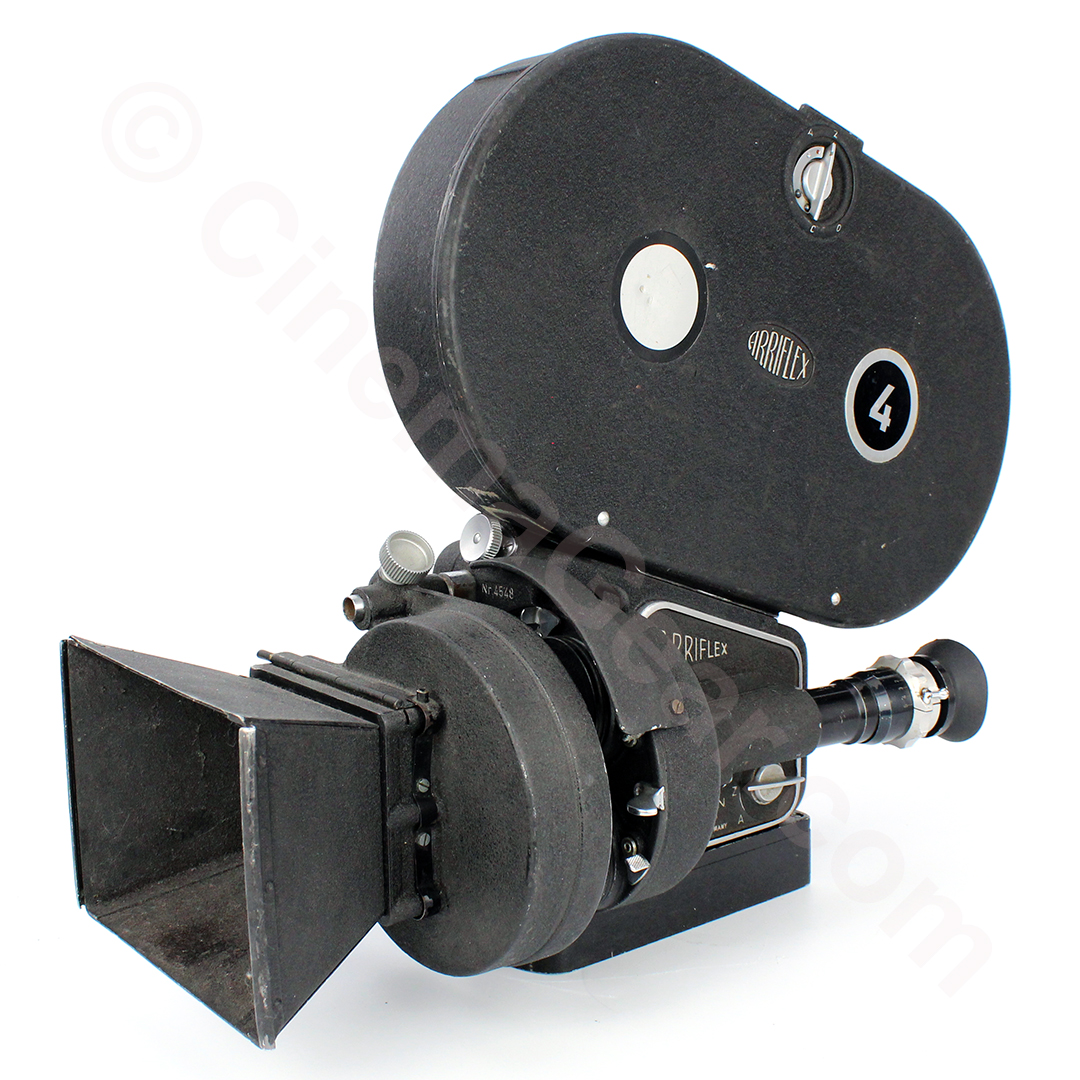
Arriflex 2B
Arriflex 35 II B spinning mirror reflex 35mm camera with standard three position turret featuring ARRI standard lens mounts and sitting on a Birns & Sawyer flatbase with a variable speed motor. The camera comes complete with a matte box and a non-reversible 400’ magazine. This camera has been fully cleaned and serviced and is ready to shoot your next project.
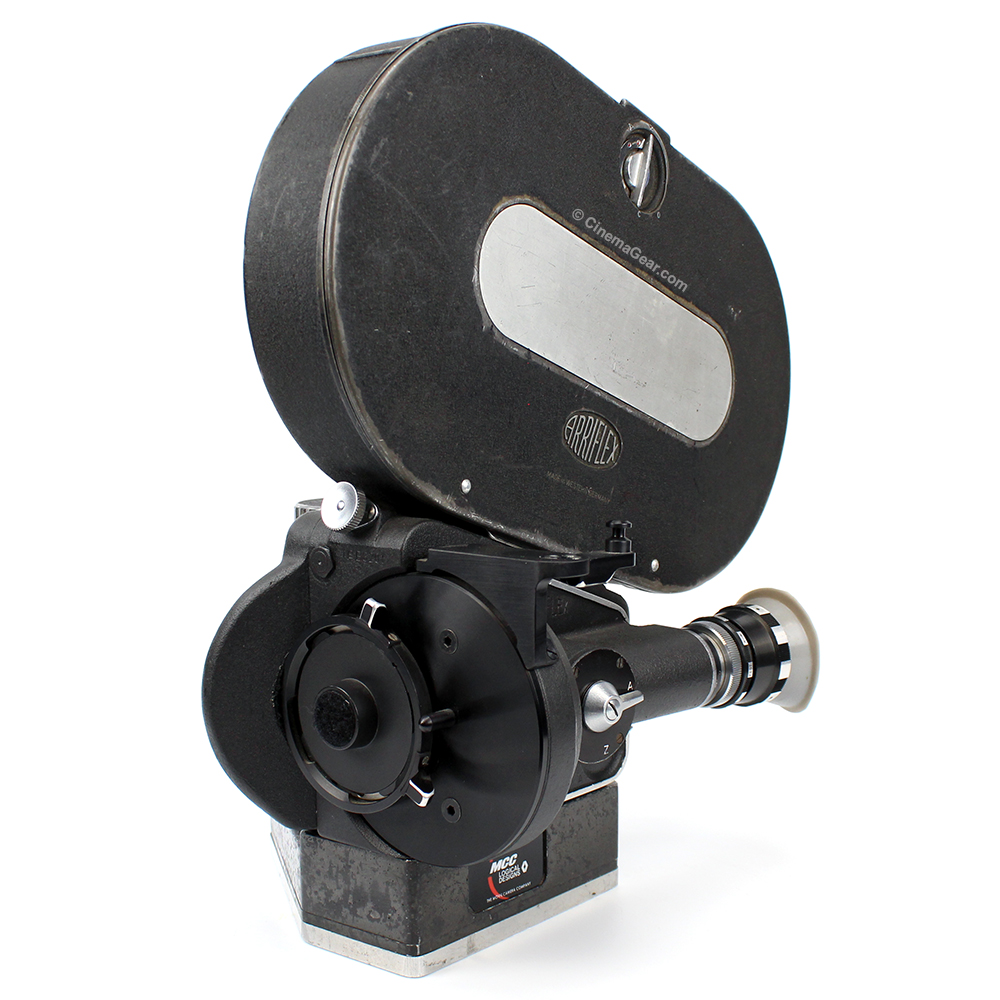
Arriflex 35 II B with PL mt
Arriflex 35 II B spinning mirror reflex camera with PL lens mount, custom fit IIC camera door and viewfinder optics, and custom tape hook. This camera comes complete with a 400' reversible magazine, MCC Logical Designs Flat Base, and a variable speed motor.

Pan ARRI 35 II C
This Pan ARRI 35 II C camera is offered as shown, with Panavision iris rods, a Panavision follow focus, and a Panavision matte box, as well as a bigger, brighter magnifying eyepiece, and an Arriflex constant speed motor. It also comes with a recreation of the original Pan-ARRI logo, as well as the wonderfully convenient and brilliantly designed Ted Rae top carry handle.

Power Adapter for ARRI 2B/2C Cameras
Now available is our power adapter that works with most ARRI pistol grip motors for the ARRI 2B and 2C 35mm cameras. Gone are the frustrating days when the old, cracked ARRI 2B and 2C cables failed to work. Now those cables can be replaced with our power adapter and any off-the-shelf 4-pin XLR power cable. Our adaptor is very simple to use. It simply plugs into the motor where the old power cable would go, giving you an industry standard 4-pin XLR connector, ready for your power cable. The 3D printed body of our power adapter features 2 solid copper barrel-type contacts, machined to fit the large pin and the small pin of most of the stock ARRI pistol grip motors. On the back of the adapter is a standard 4-pin XLR plug, ready for use with your XLR power cable. The power cable is not included. These ARRI 2B and 2C power adapters are now available and will be $149 each, plus shipping. I am still working on the inserts that will fit the motors that have two big pins, those will be available in early 2026.

Bell & Howell Spider Eyemo
35mm Bell & Howell Spider Eyemo with original case and accessories. The 35mm Bell & Howell Eyemo was introduced in 1925 as a successor to the popular 16mm Filmo that was launched in 1923. Camera is offered as is, unrestored.
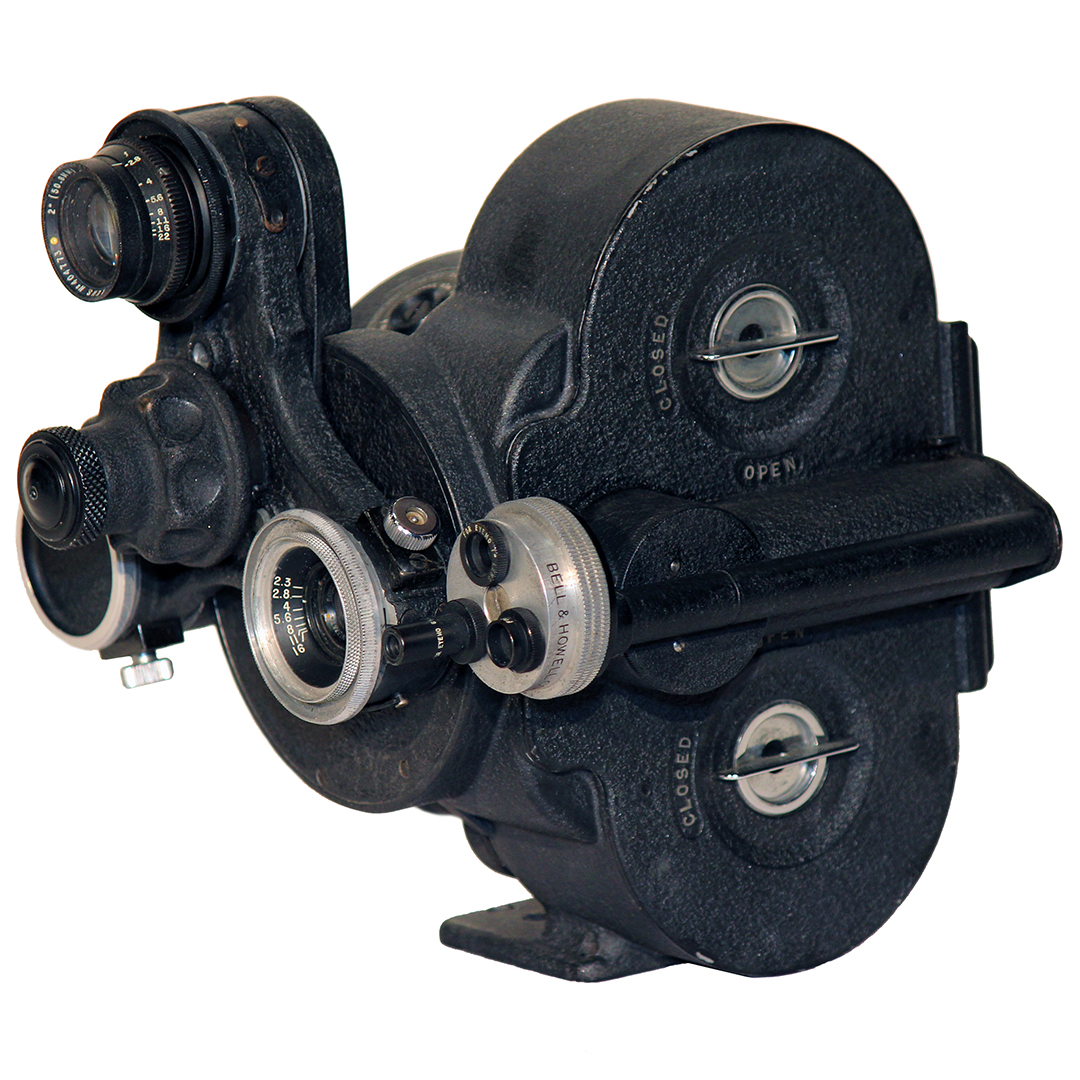
Bell & Howell Spider Eyemo
35mm Bell & Howell Spider Eyemo with original case and accessories. The 35mm Bell & Howell Eyemo was introduced in 1925 as a successor to the popular 16mm Filmo that was launched in 1923. Camera is offered as is, unrestored.

Mitchell GC #763
Mitchell GC #763 was originally sold to Holloman Air Force Base in New Mexico in 1948. The Mitchell GC ("Government Camera") was adapted from the original Mitchell Standard in the 1930's or 40's as a more economical version for the U.S. military.
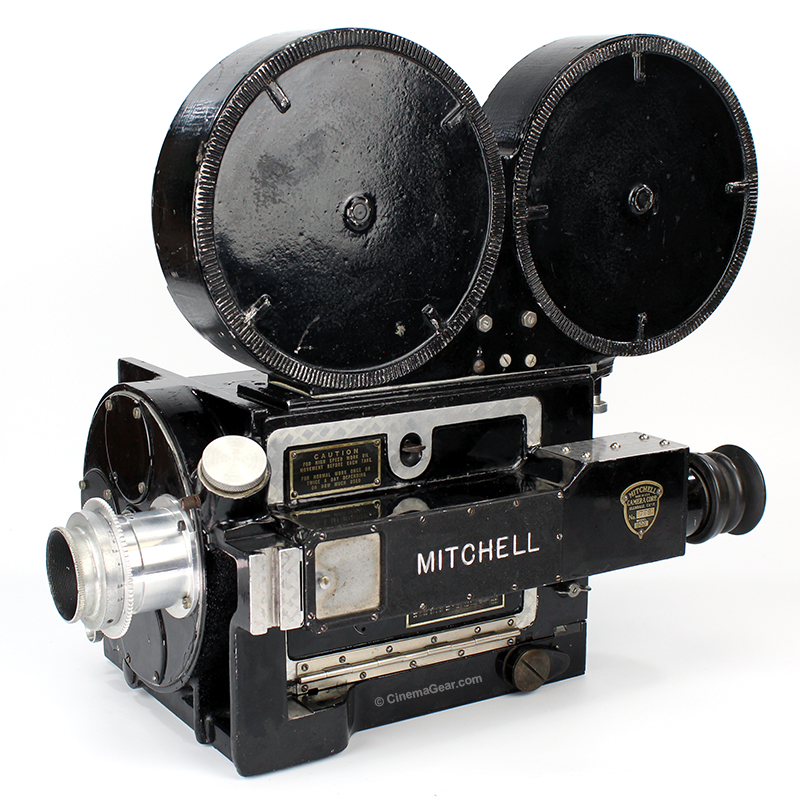
Mitchell GC #779
Mitchell GC #779 was originally sold to the United States Navy in 1949. The Mitchell GC ("Government Camera") was adapted from the original Mitchell Standard in the 1930's or 40's as a more economical version for the U.S. military.
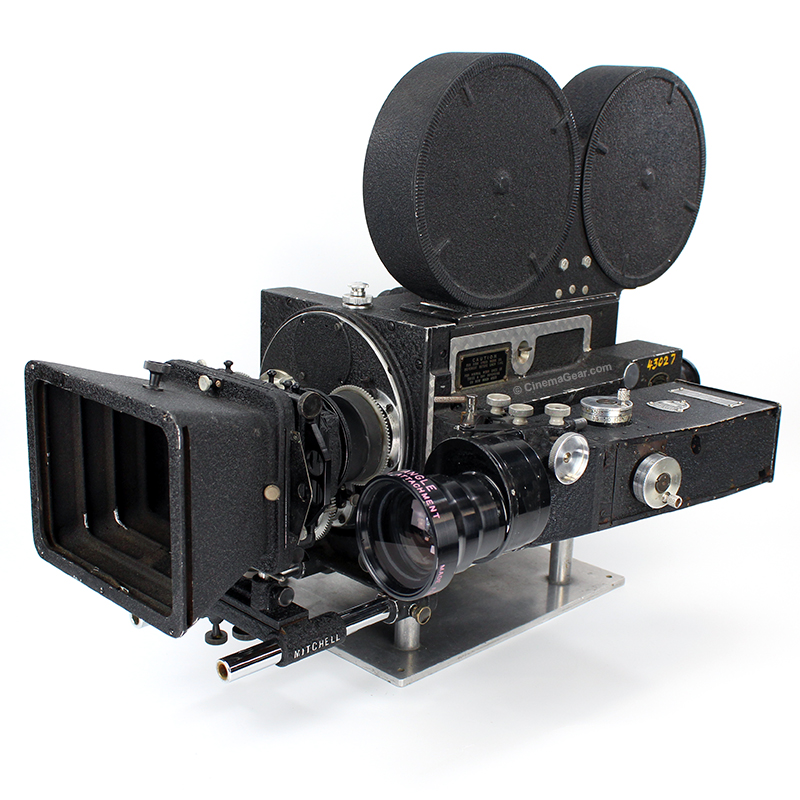
Mitchell GC #1032
Mitchell GC #1032 was originally sold to the United States Army Aberdeen Proving Ground in 1953. Located just outside of Aberdeen, Maryland, the Aberdeen Proving Ground was established in 1917 as the US prepared to enter World War I. This is a Type A chronograph GC camera that records an image of a clock face (or other instrumentation) along with the main subject on each film frame. The military employed these chronograph cameras to document aircraft and weapons tests.
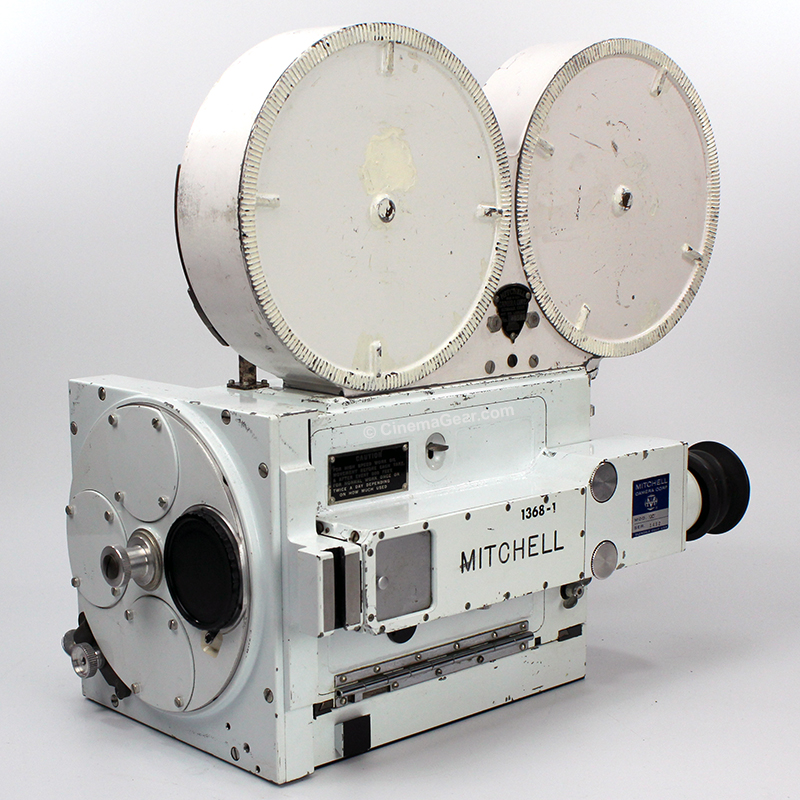
Mitchell GC #1452
Mitchell GC #1452 was originally sold to the Raytheon Manufacturing Company in 1968. Raytheon was founded in 1922 and remains a leading developer of defense electronics, including radar systems, satellite sensors, and cybersecurity. Key early Raytheon developments include the S Gas Rectifier Tube that revolutionized household radios, and the invention of the microwave oven.
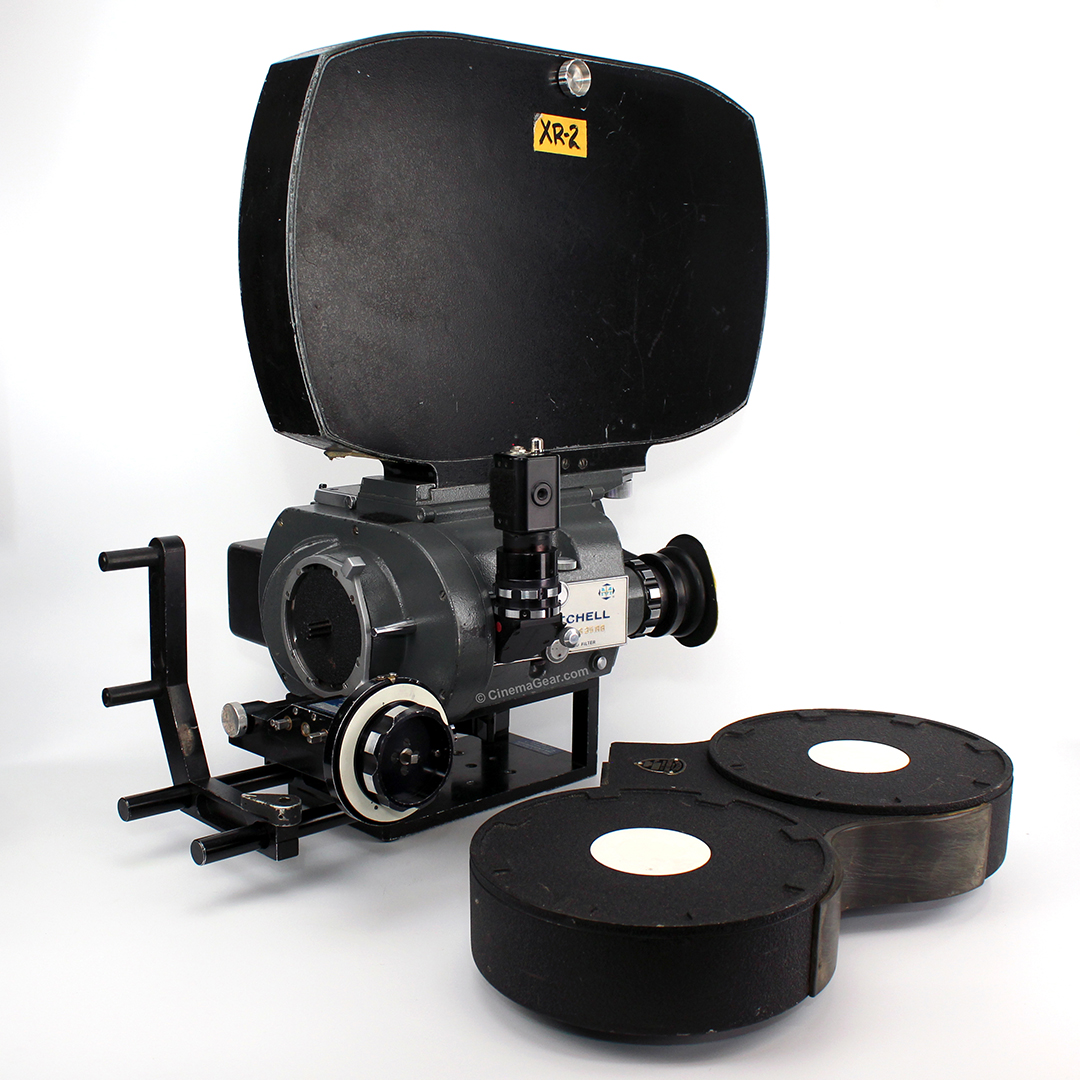
Mitchell MK II #182
The Mitchell Mark II 35mm Studio Reflex Camera was introduced in 1962 and was a major departure from the Mitchell Standard, NC, and BNC cameras that had brought Mitchell such success over the previous five decades. This camera was a lighter-weight, hand-holdable 35mm pin-registered, high speed camera with a spinning mirror reflex viewfinding system. This camera, #182, was manufactured in June 1963 and comes out of the collection of cinematographer John Hora.
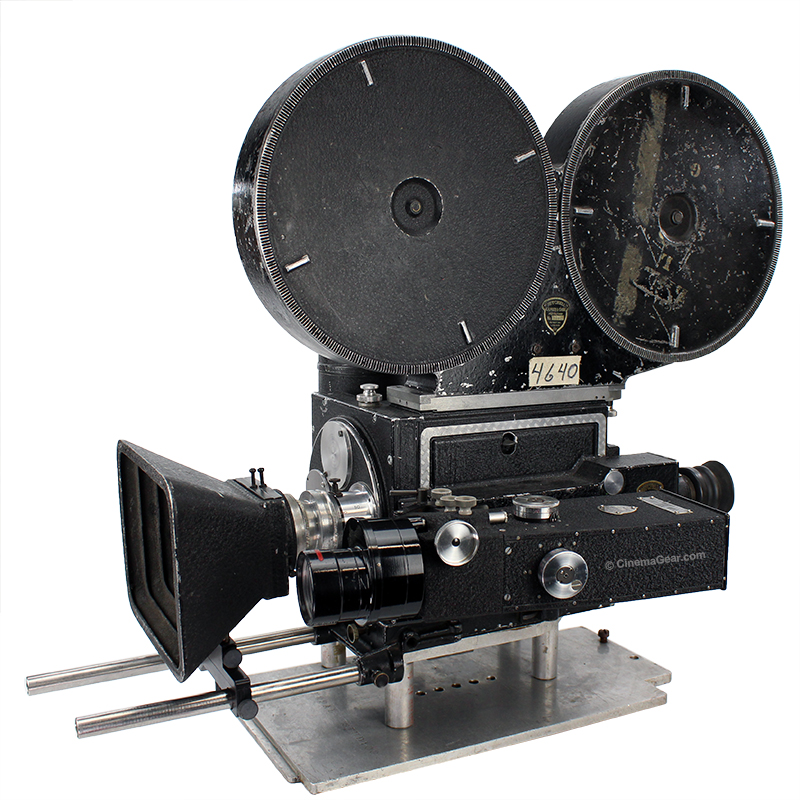
Mitchell NC #239
Mitchell NC #239 was originally sold to the United States Army Air Corps in 1942 and used by the First Motion Picture Unit. The FMPU was the first military unit made up entirely of movie industry professionals. During the Second World War, the FMPU produced recruitment, training, and propaganda films for the U.S. military, and also trained combat camera units for deployment overseas.
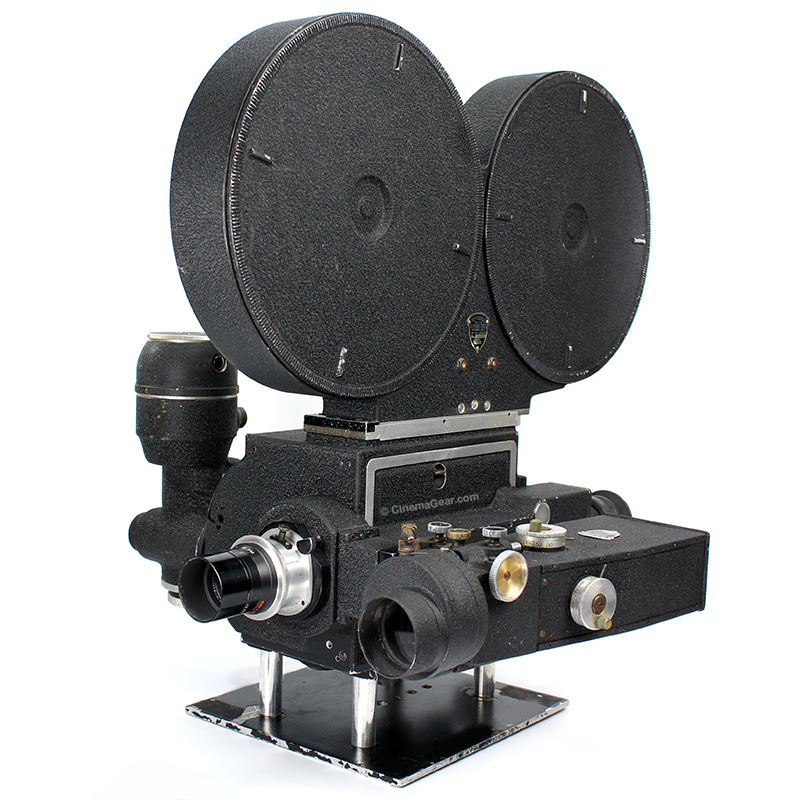
Mitchell NCR #345
Mitchell NCR #345 was originally sold to Associated Filmakers Inc. in 1946. Associated Filmakers Inc. was a New York-based producer of commercial, industrial, and educational films. This NCR is an early reflex conversion that utilizes the Mitchell Standard lens mount.
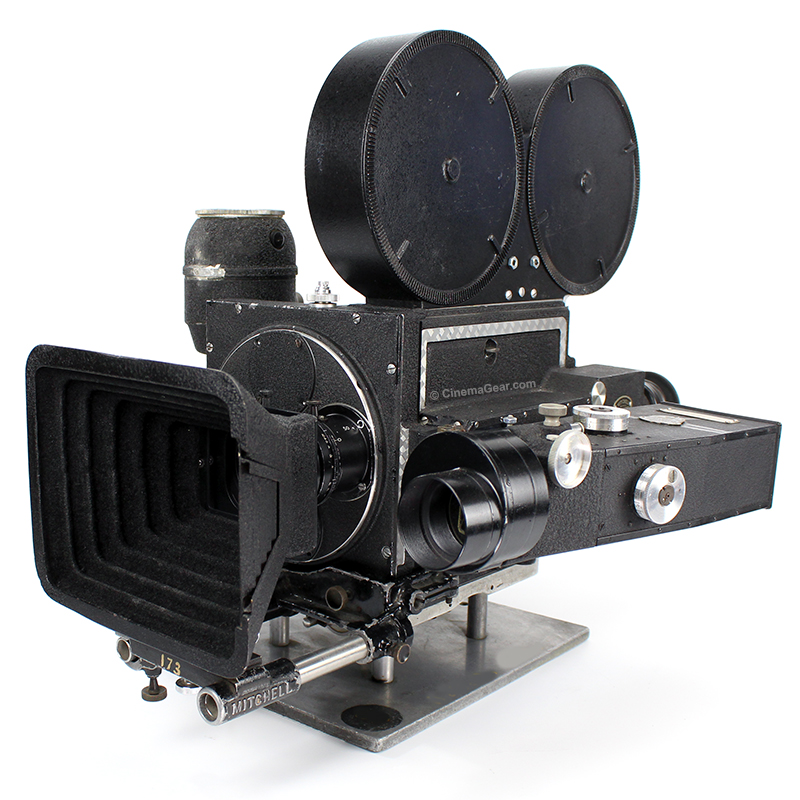
Mitchell NC #669
Mitchell NC #669 was originally sold to the Lookout Mountain Air Force Station in California in 1959. Lookout Mountain was a fully equipped movie studio within the U.S. military whose main mission was to record bomb detonations and weapons tests.
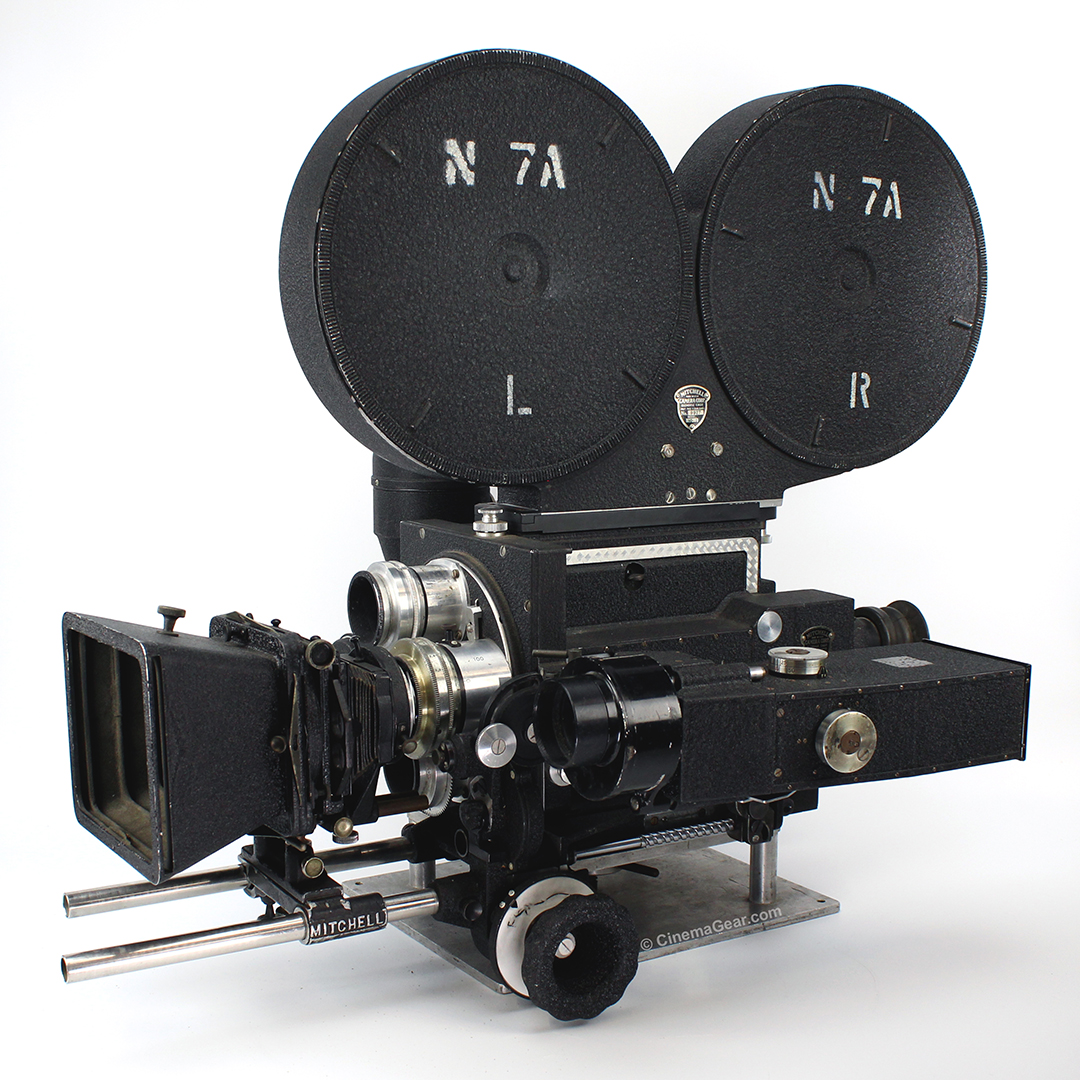
Mitchell NC #701
Mitchell NC #701 was originally purchased by the 1352nd Photo Squadron in 1961. The 1352nd was headquartered at the Lookout Mountain Air Force Station in California from 1947-1969, and was tasked with recording nuclear and ballistic missile tests on film.
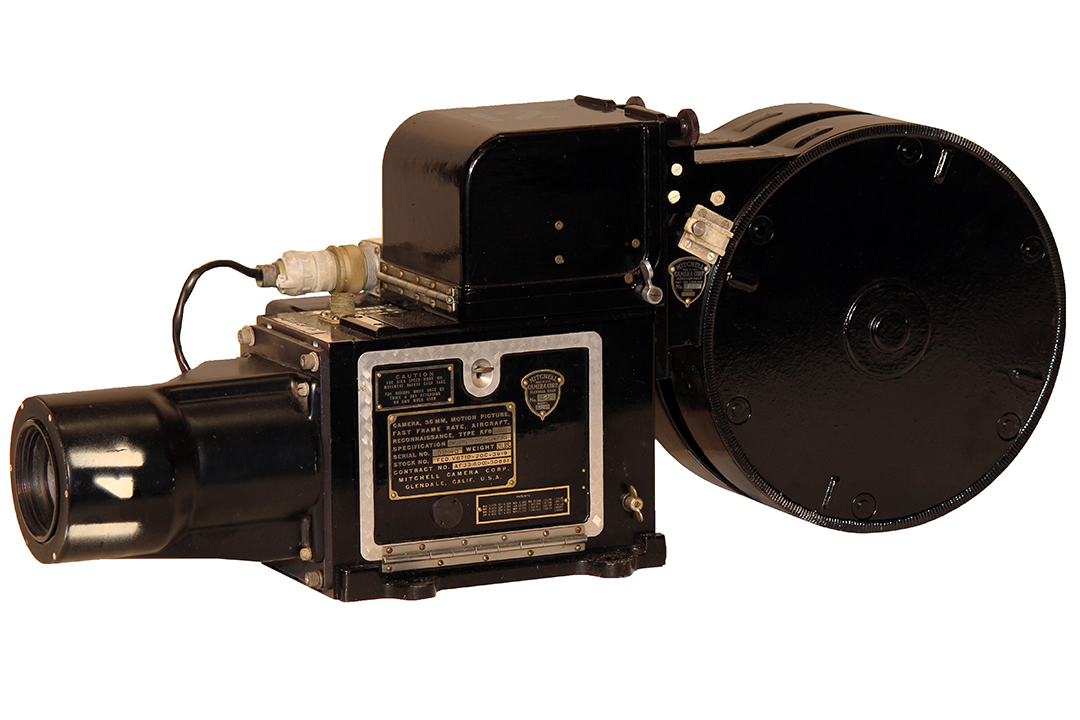
Mitchell KF8
The Mitchell KF8 is a 35mm aircraft reconnaissance camera built for the United States Navy in the 1950s. The camera body is based on the design of the Mitchell GC/Standard but adapted to capture high speed reconnaissance motion pictures from the nose cone of an aircraft. The viewfinder and L-base were omitted from the design, and, in order to achieve a lower overall profile, a set of coaxial magazines was designed to sit behind the camera. The lenses were encapsulated in a special housing that helped prevent freezing and fogging, and allowed the pilot to remotely control the aperture and focus. Research on the Mitchell KF-8 has proven quite difficult. If any of you camera or aircraft enthusiasts out there have more information about this interesting camera, we would love to hear from you!
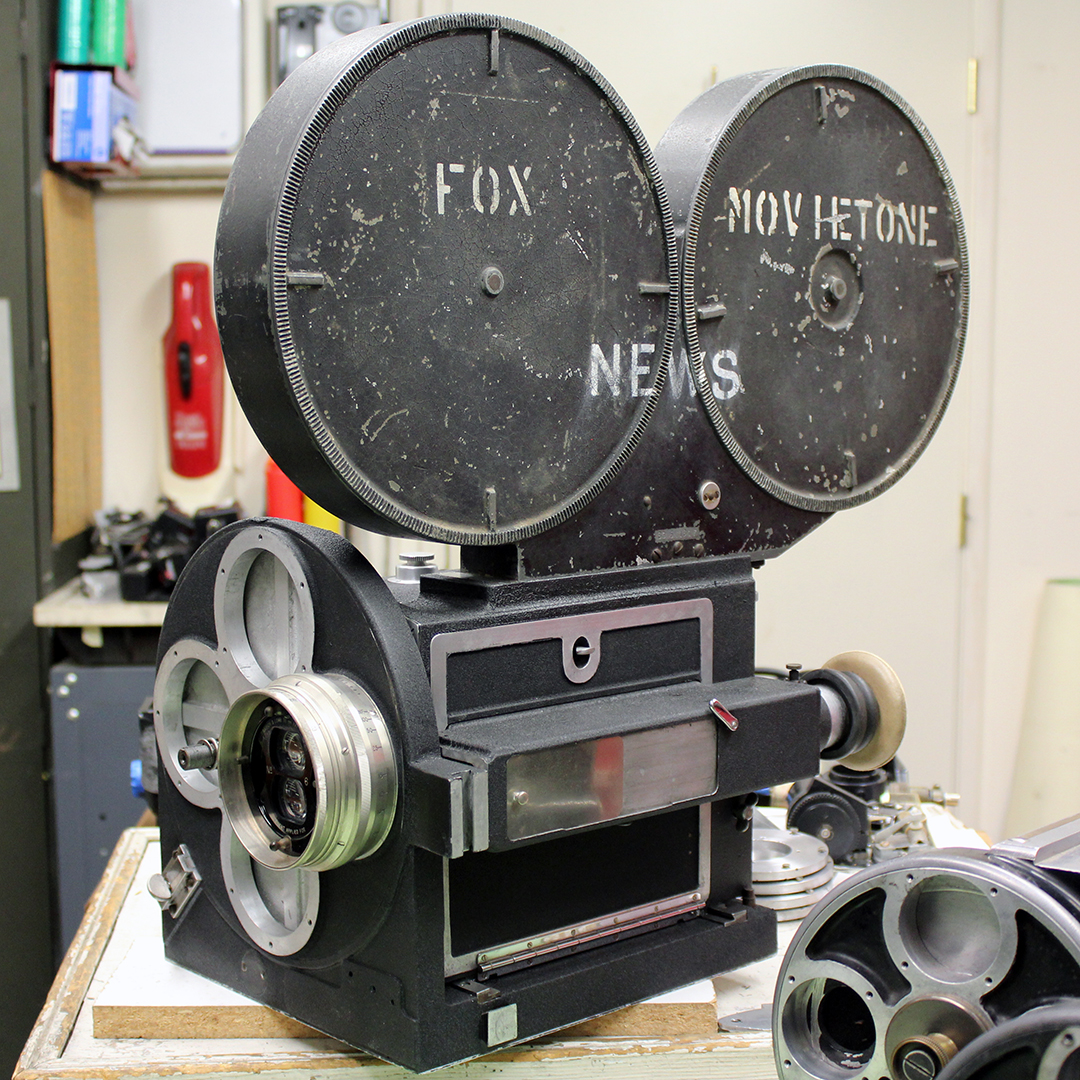
Stein 2-Color Camera
In the 1920's, William Fox commissioned the New York-based firm Wm. P. Stein & Co. to build cameras for a new color process called "Natural Color". The Fox Natural Color, or Nature Color, process made use of one strip of black and white film shot through a custom designed Bausch & Lomb Raytar binocular lens to which red and green filters were affixed.
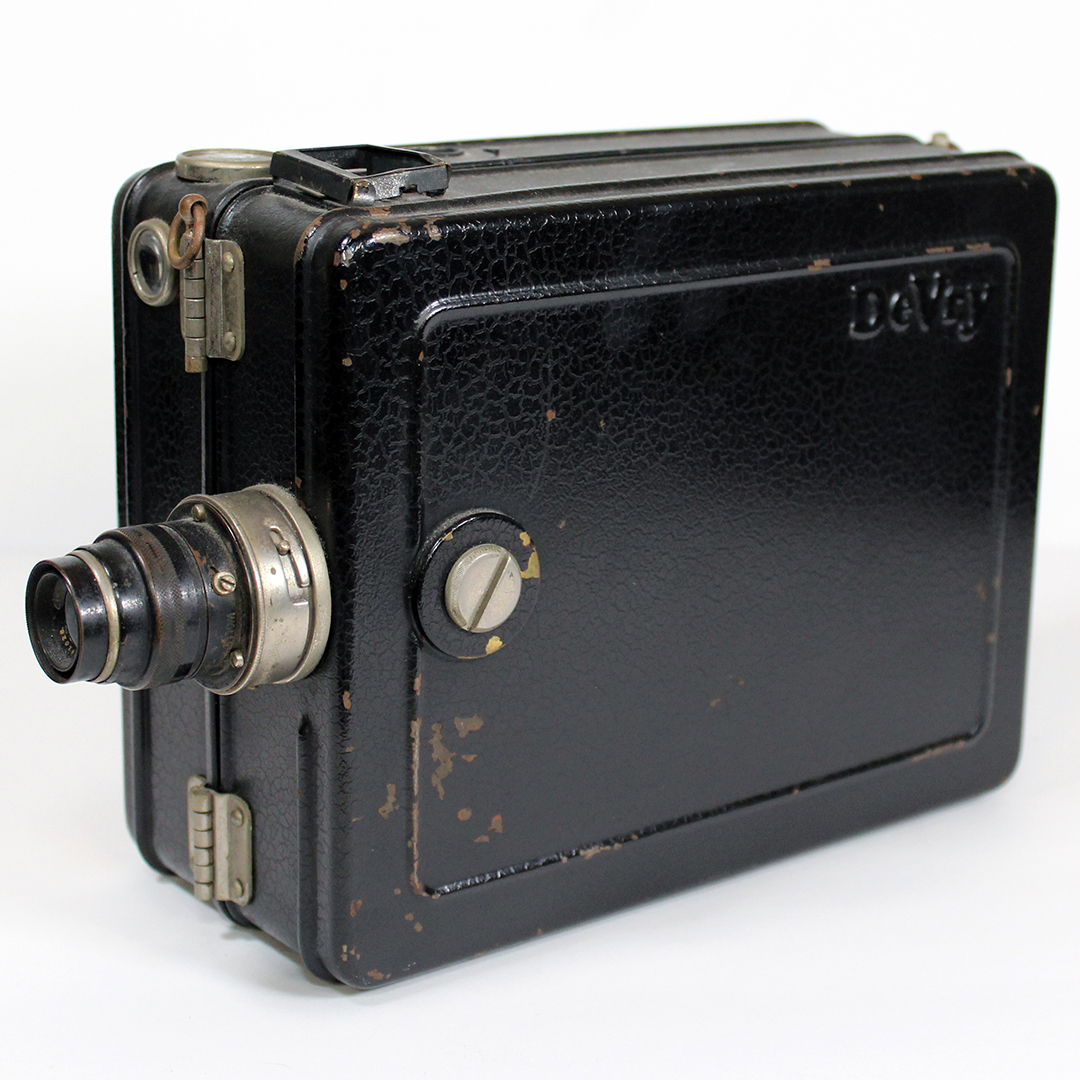
DeVry Standard "Lunch Box" Camera
The DeVry Standard Portable Camera, nicknamed the Lunch Box for its rectangular metal box design, was introduced in 1926. Advertisements touted the camera’s ease of use, durable construction, and low cost. This particular camera, serial # 765, was once owned by actress Marion Davies.
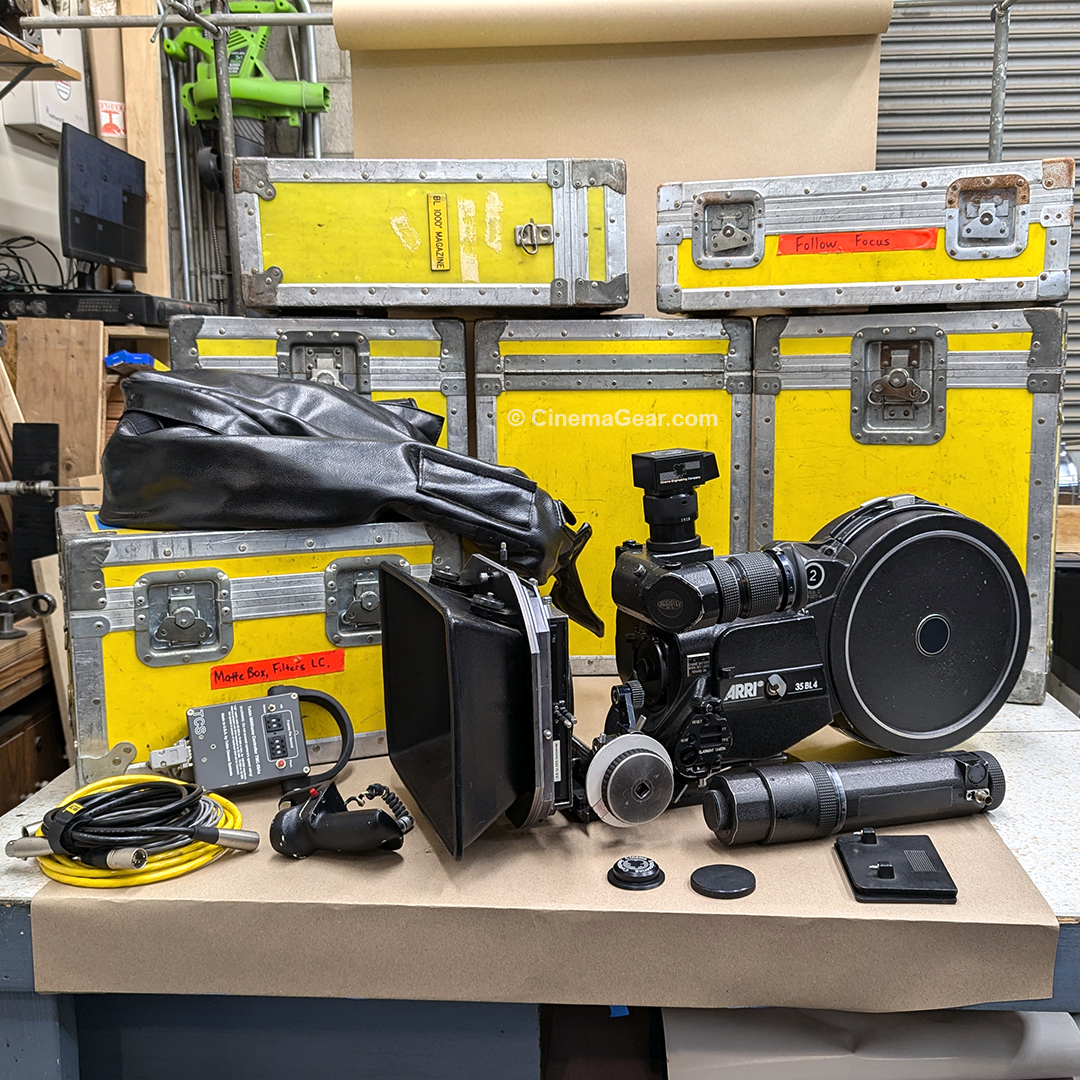
Arriflex BL 4S
The final entry in the venerable Arriflex 35 BL series of cameras, the ARRI 35 BL 4S is a remarkable production tool, and one of my personal favortie cameras. The BL 4S is easily hand-holdable, or can be mounted on a geared head or a fluid head. It has a variety of operator-friendly features, including interchngeable ARRI Glow ground glasses, long and short orientable viewfinders, heated eye cup, pistol grip with remote on/off, PL lens mount, and variable pitch control.
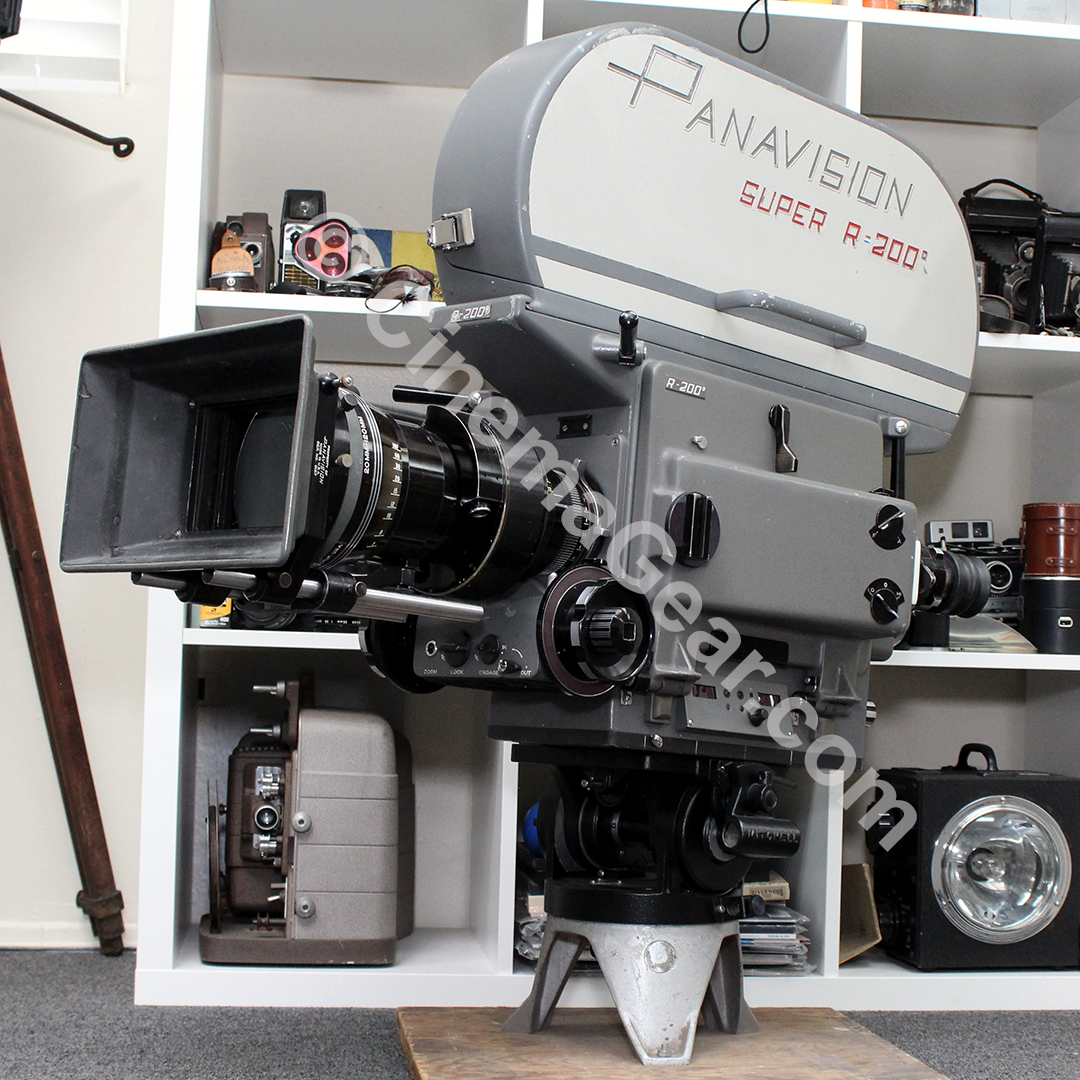
Panavision Super R 200
A rare example of the venerable Panavision Super R 200 (SPSR), this camera is one of only a handful that have ever been available for private ownership.
 Large Format Cameras
Large Format Cameras
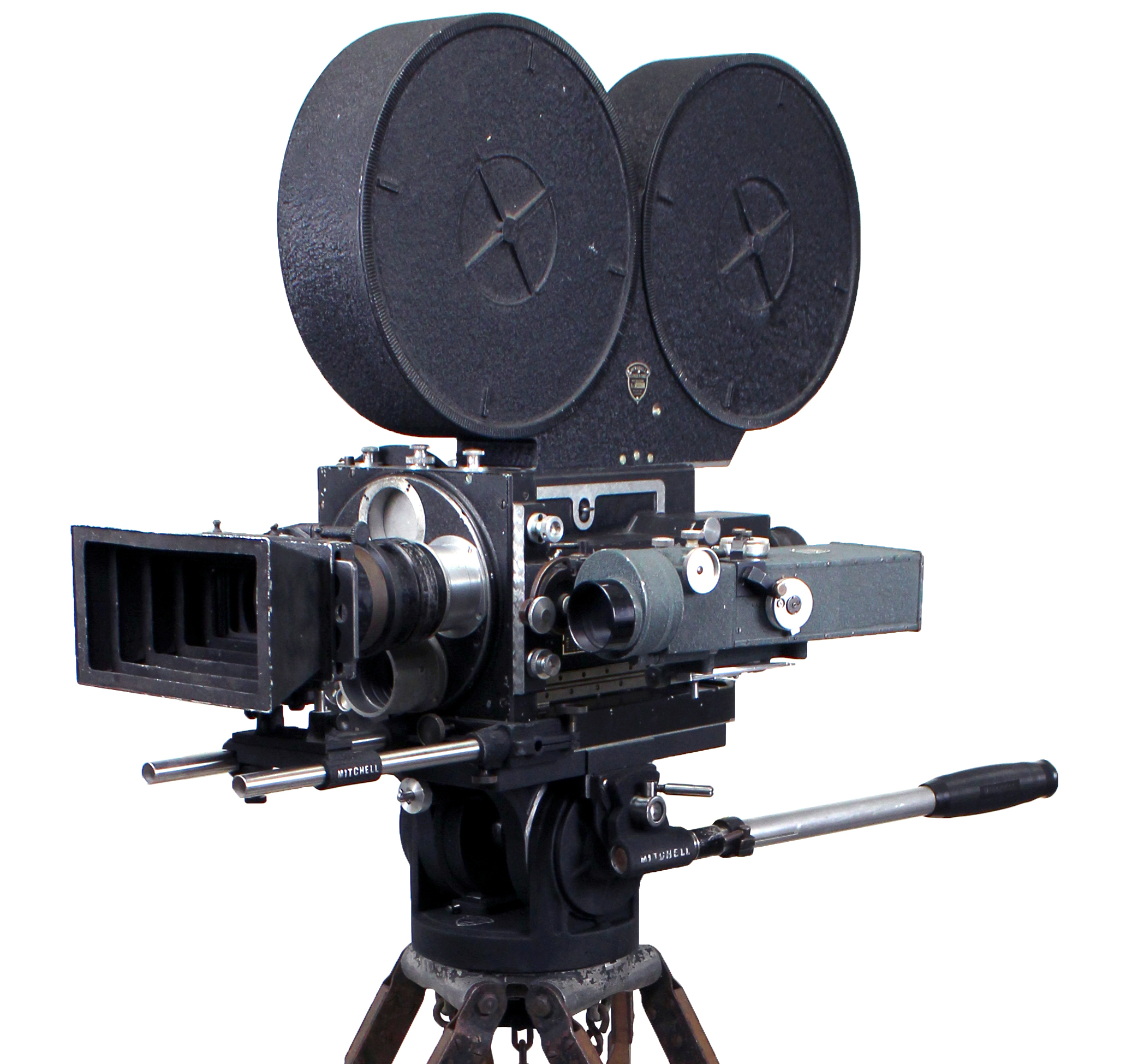
Mitchell FC #8
Mitchell FC #8 was originally sold to the Fox Film Corporation in 1930. The FC ("Fox Camera") is a 70mm 4-perf pull-down camera designed for the Fox Grandeur wide film system. This camera was likely used to film Raoul Walsh's 1930 Oregon Trail epic "The Big Trail", starring a very young John Wayne in his first leading role.
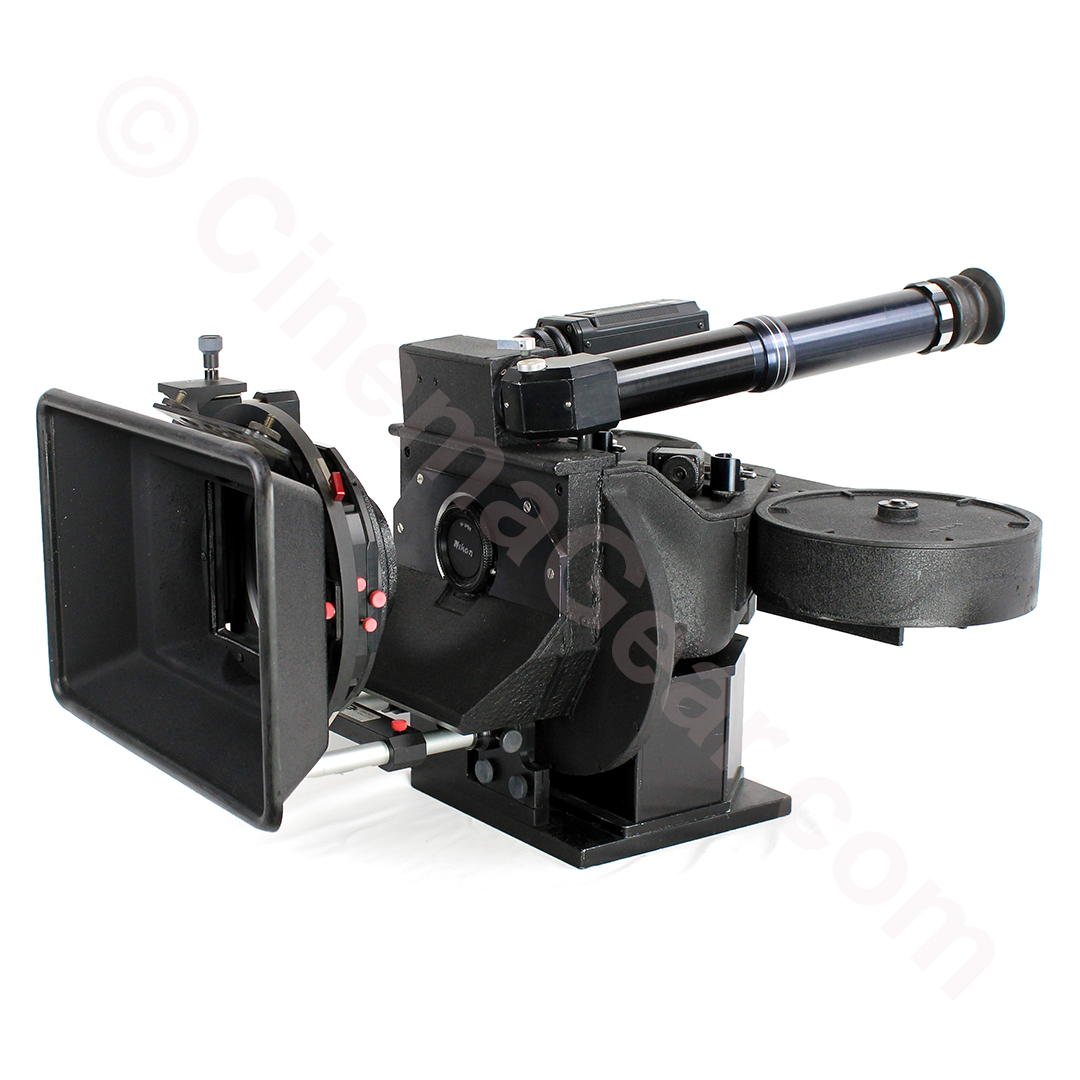
Mitchell VistaVision Butterfly
Mitchell VistaVision Butterfly 35mm 8-perf pull across camera with Fries spinning mirror reflex viewfinding system, crystal motor, video tap, swaing-away matte box, Nikon lens mount, four 400' magazines, and four 1000' magazines. Features the always-reliable Mitchell compensating link movement with 3 registration pins and a dual 4-pin pull-down claw.
 16mm Cameras
16mm Cameras
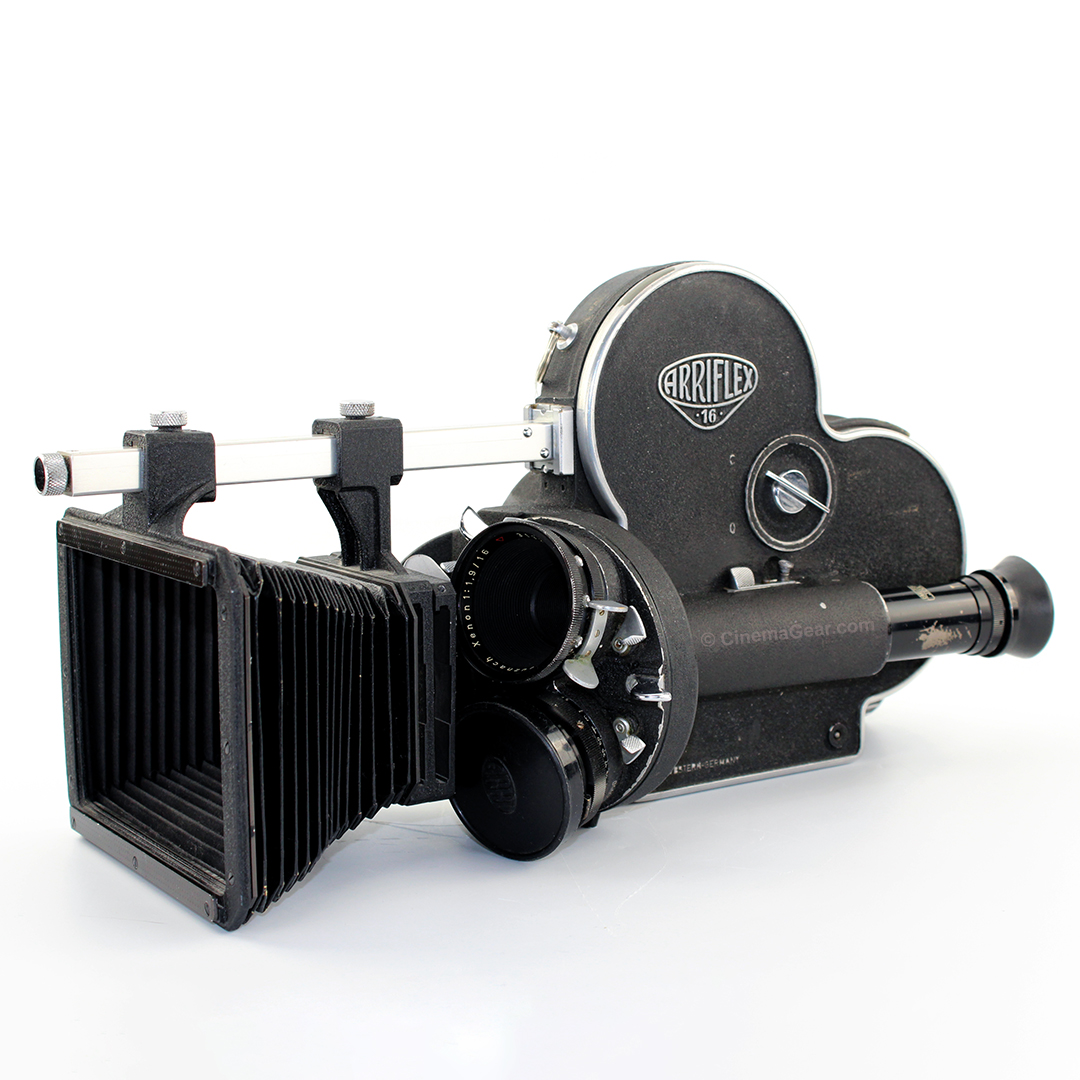
ARRI 16 S with Schneider Lenses
This ARRI 16 S camera comes from the collection of five-time Emmy Award winning photojournalist, author, and owner of video rental firm Videosmith, Steven Trent Smith. This early ARRI 16 S, variously nicknamed the “flat door ARRI”, features the older style viewfinder optics and door castings. You can see in later examples of the ARRI S/ST that the camera door housings were updated to accommodate the improved optical viewfinding system and eyepiece. This camera comes complete with three Schneider Cine Xenon lenses, one 16mm f1.9, 25mm f1.5, and 50mm f1.2, along with an ARRI matte box, and a variable speed motor. The camera has been cleaned, lubricated, and serviced. The flange focal depth was checked and the camera was run with 100’ of film. An excellent addition to any filmmaker’s kit, or to your classic camera collection.
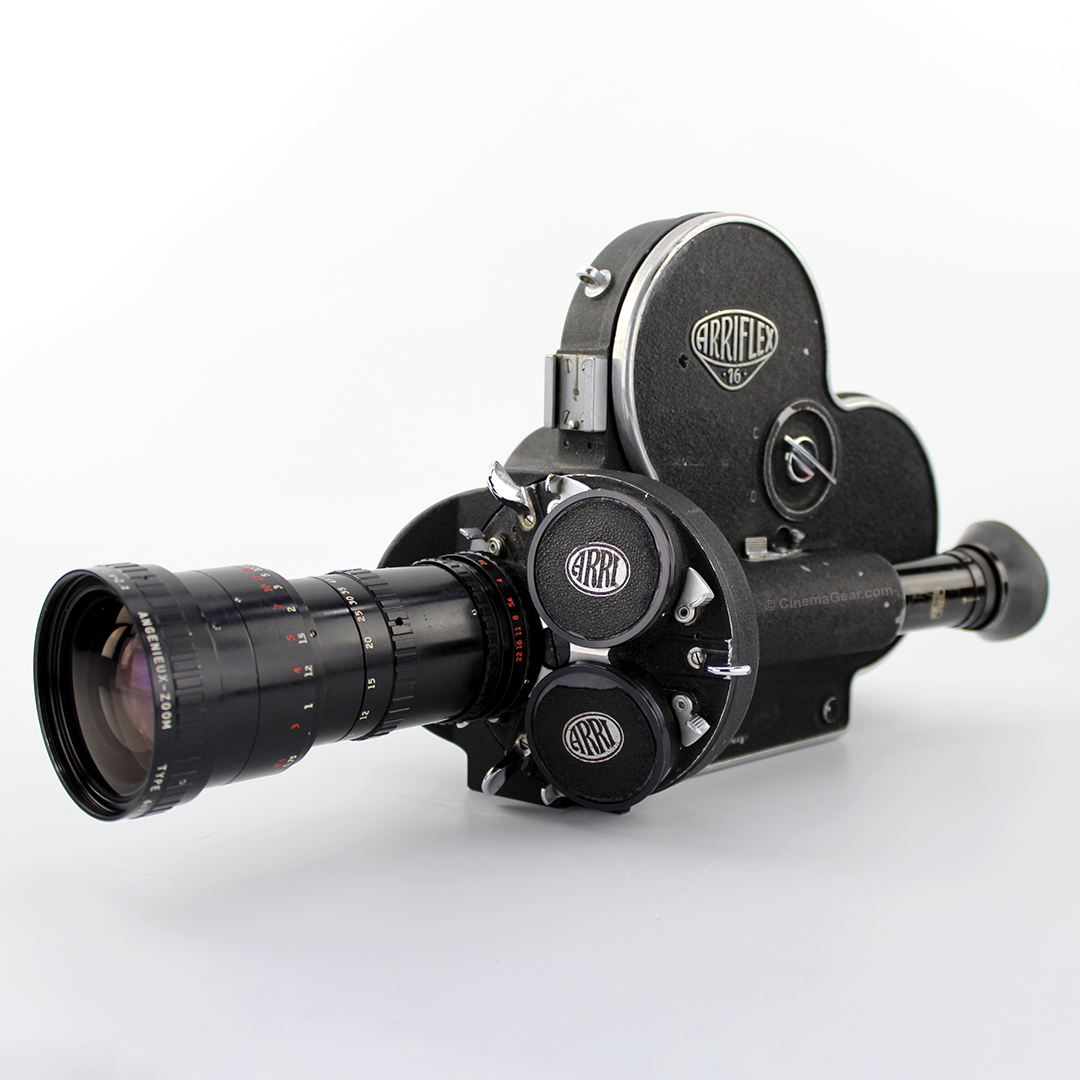
ARRI 16 S with Angenieux Zoom Lens
This ARRI 16 S camera comes from the collection of five-time Emmy Award winning photojournalist, author, and owner of video rental firm Videosmith, Steven Trent Smith. This early ARRI 16 S, variously nicknamed the “flat door ARRI”, features the older style viewfinder optics and door castings. You can see in later examples of the ARRI S/ST that the camera door housings were updated to accommodate the improved optical viewfinding system and eyepiece. This camera comes complete with an Angenieux 9.5-57mm zoom lens, along with an ARRI matte box, and a variable speed motor. The camera has been cleaned, lubricated, and serviced. The flange focal depth was checked and the camera was run with 100’ of film. An excellent addition to any filmmaker’s kit, or to your classic camera collection.
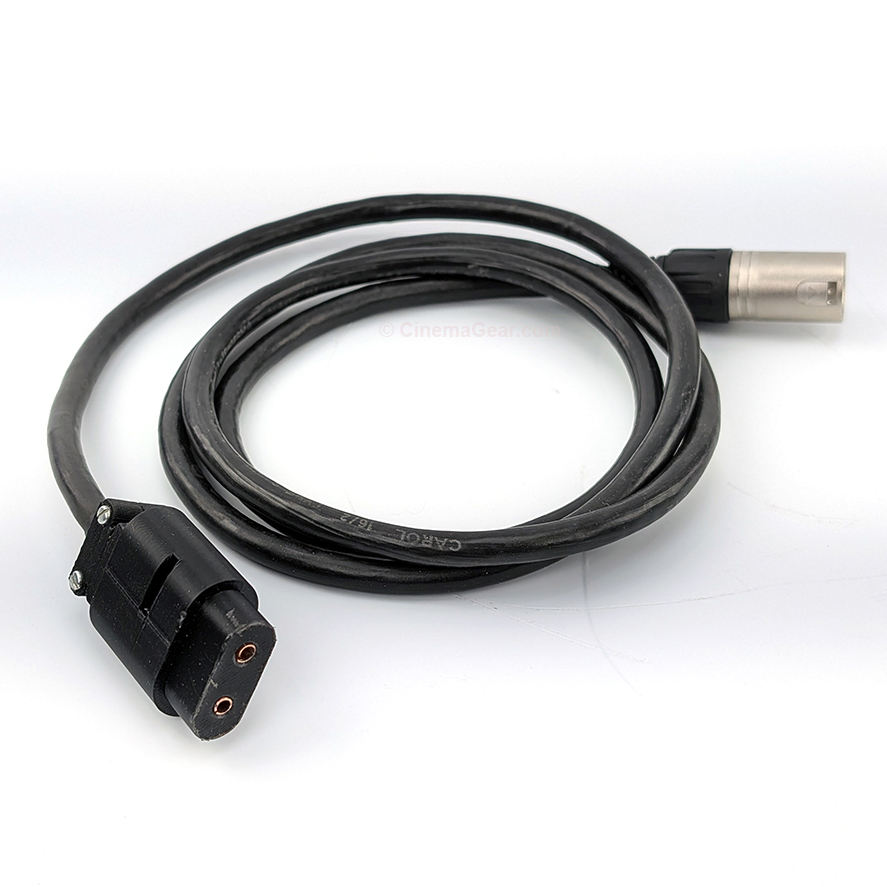
Replacement Power Cable for ARRI S/ST
This is a replacement power cable for both the ARRI 16 S and ST cameras. The cable features a custom 3D printed power connector that fits the stock ARRI power input, along with a 6ft cable and an industry-standard 4-pin XLR connector on the other end. Includes the slot for ARRI ST cable clamp. These power cables are printed and assembled to order, so please allow 7 to 10 business days for fullfillment.
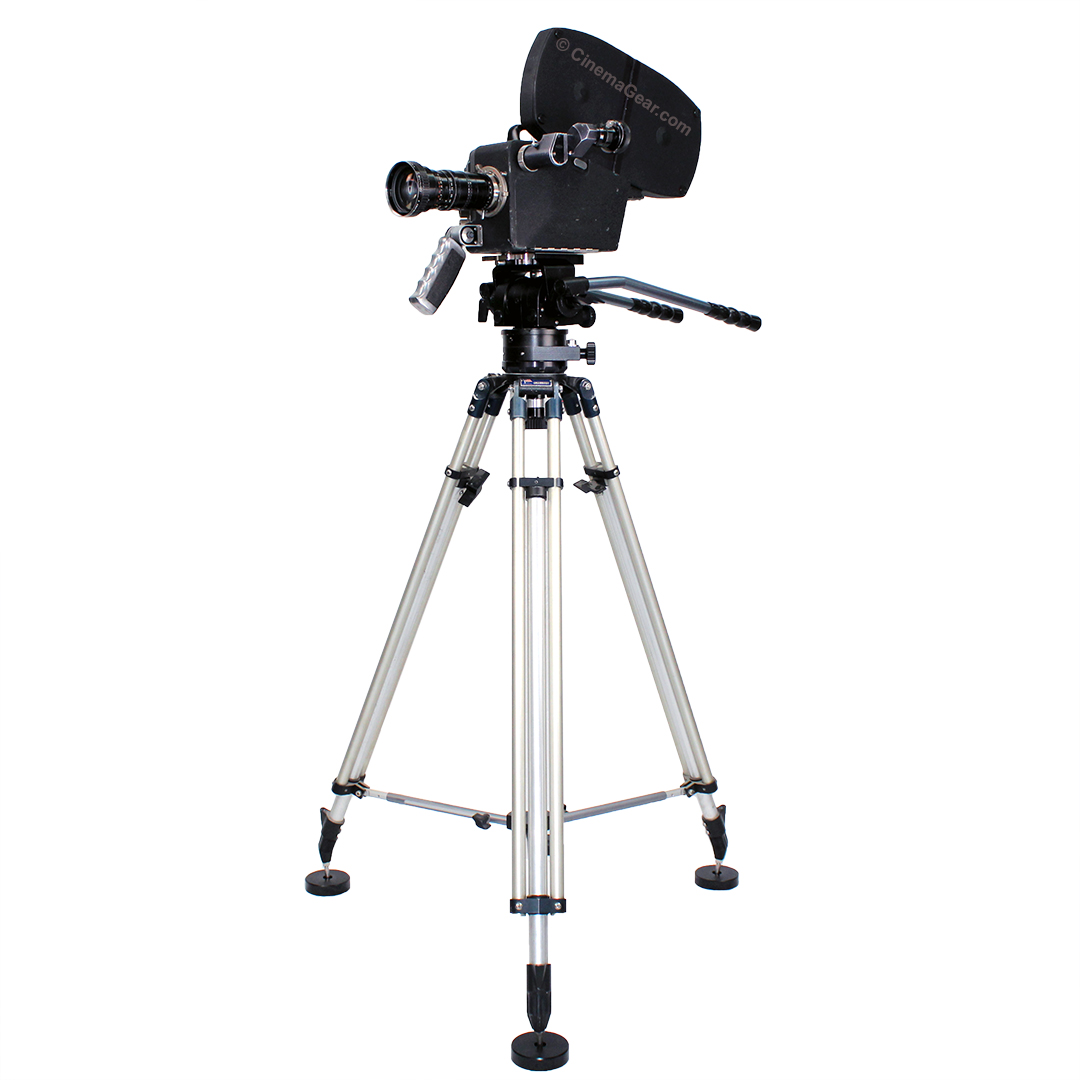
Cinema Products CP-16R Package
Introduced in 1973, the Cinema Products CP-16R quickly became one of the most popular 16mm spinning mirror reflex, sound-silent cameras on the market. It features a built-in magnetic sound head for single-system sync sound recording. The camera is small, ergonomic, light weight, and easily portable, ideal for news gathering and documentary, low budgest, and student filmmaking. This CP-16R comes complete with an Angenieux 12-120mm T2.2 zoom lens, two 400' magazines, a custom CP battery eliminator with 4-pin XLR power connector and power cable, a Peter Lisand Ultra 1 Fluid Head, and a Peter Lisand all-aluminum tripod with built-in spreader.
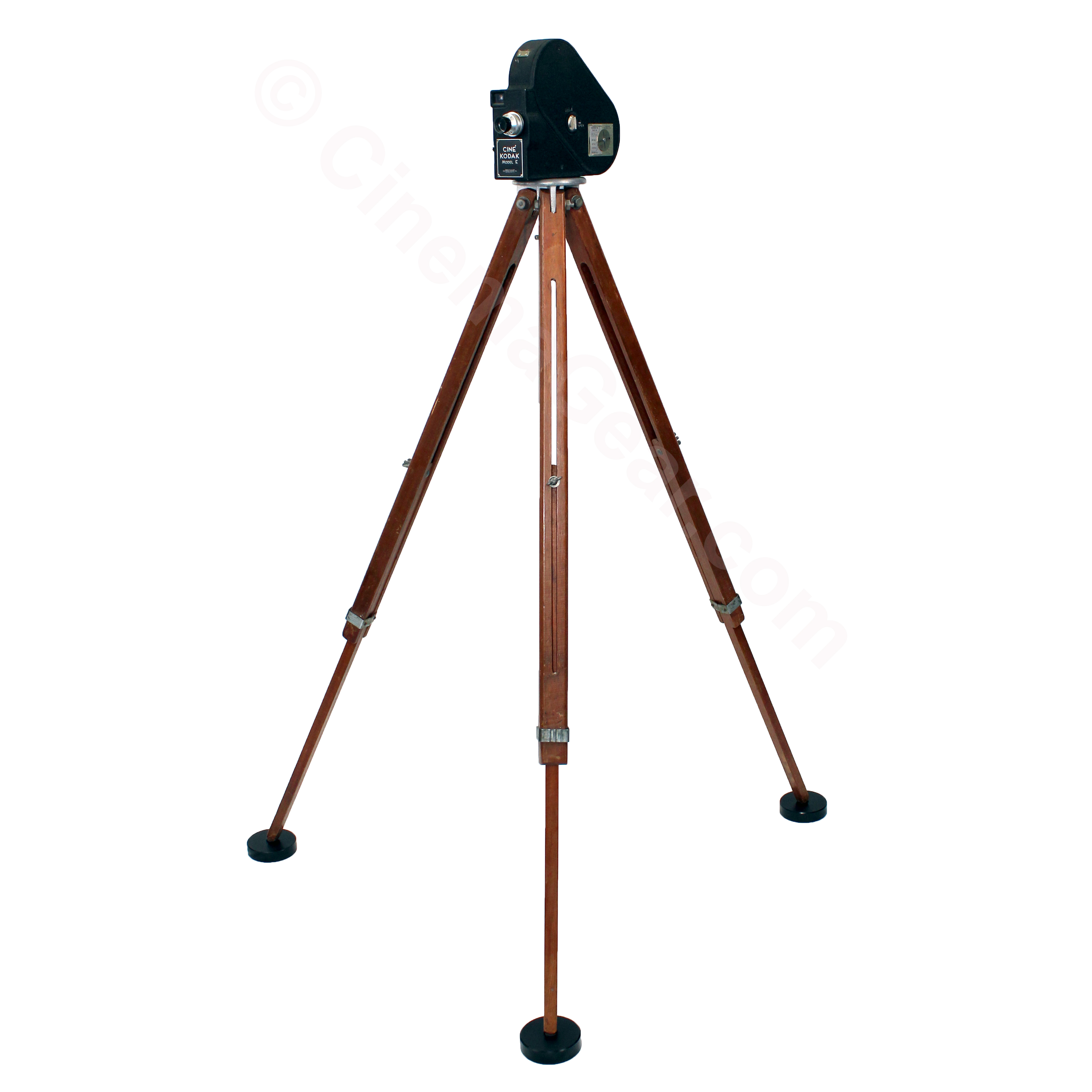
Cine Kodak Model E with Tripod
We are offering this very nice, used Cine-Kodak Model E camera with a wooden tripod. The camera has been run without film and all seems to be in working order, though the original top carry handle is missing. Introduced in 1937, the Cine-Kodak Model E was the lowest priced 16mm camera Kodak offered at the time, retailing for $48.50. The camera comes with a fixed focus 20mm f3.5 Kodak Anastigmat lens, is compatible with black and white or color films, and has a long running spring wind mechanism. It has three running speeds: Normal (16fps), Intermediate (32fps), and Slow Motion (64fps). The camera also features a built-in exposure guide, an automatic footage indicator, a dual-purpose enclosed direct viewfinder that shows both the image and footage, a simplified film gate, is easy to load, and is made of sturdy aluminum. We have paired this camera with a sturdy wooden tripod to make it a complete package for shooting or display. Offered as is.
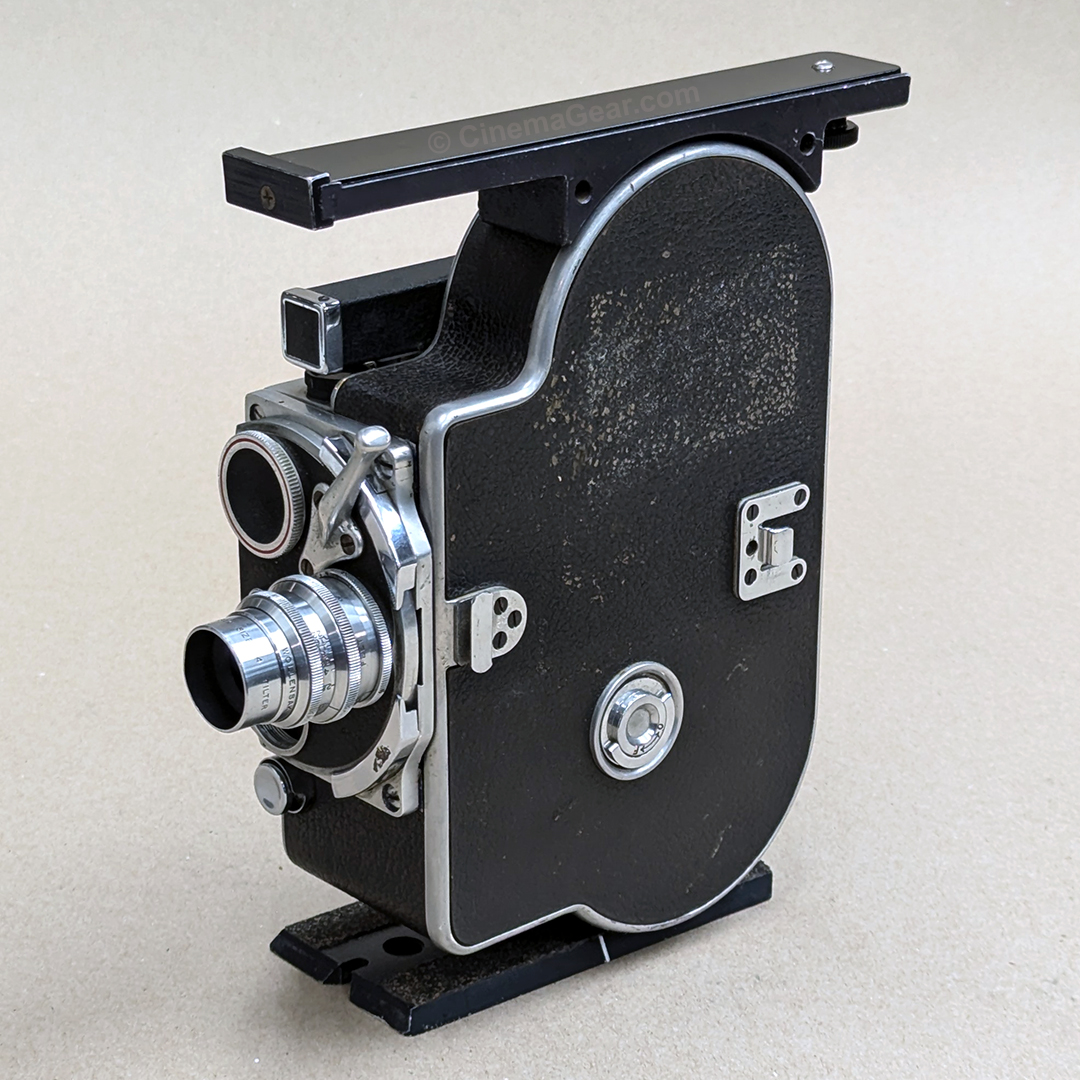
Bolex H16
Bolex H16 16mm motion picture camera with a Wollensak 25mm f1.9 lens. Includes one empty daylight spool. This camera is sold as is, has not been fully serviced, but I have successfully run 50 feet of film through it. This camera features a Mitchell-style magazine mount, but I don't have magazines or a motor that has a magazine take-up belt. Baseplate shown in picture is not included.
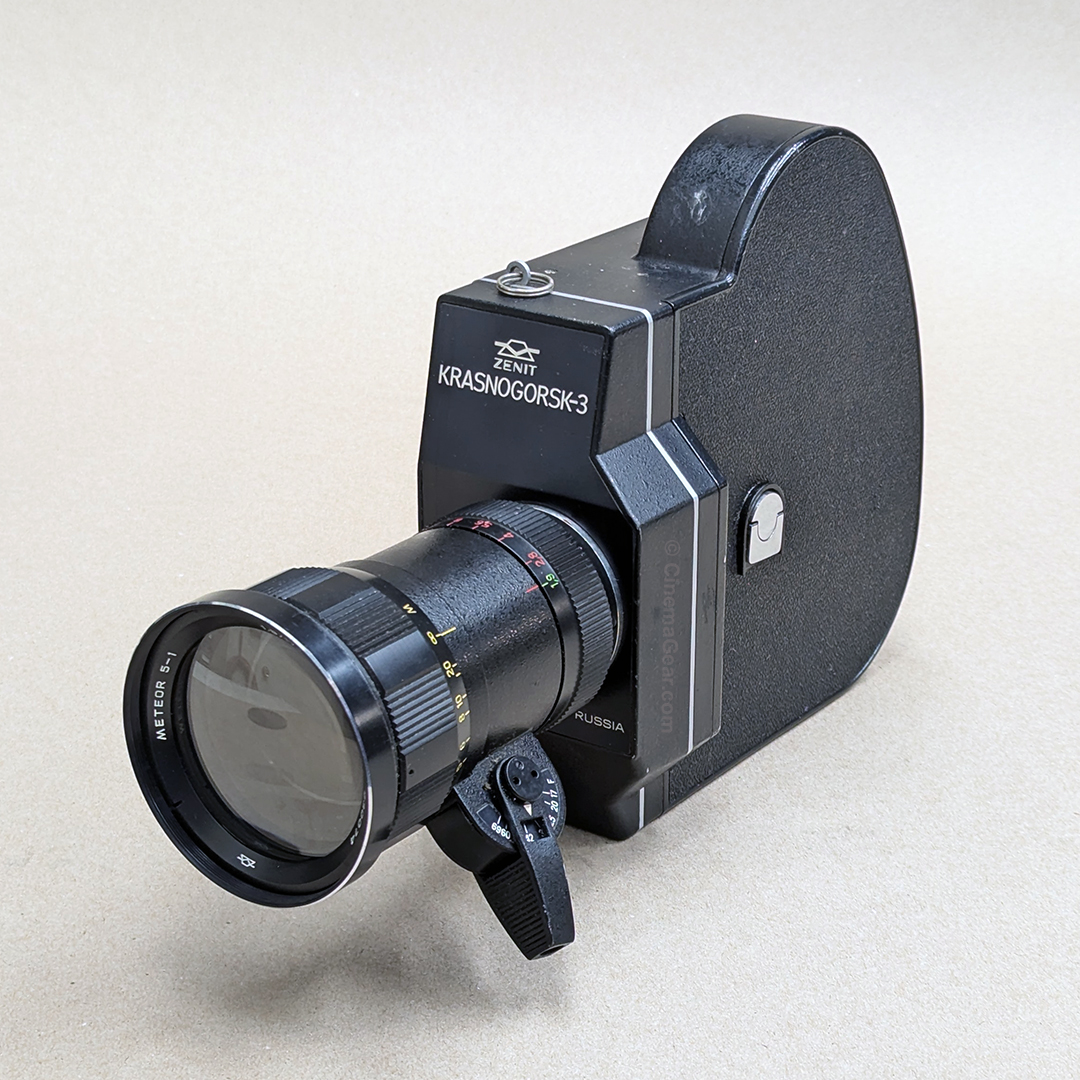
Krasnogorsk-3
Krasnogorsk-3 16mm wind-up motion picture camera with 17-69mm zoom lens. This is a great camera for a beginner that wants to experiment with film.
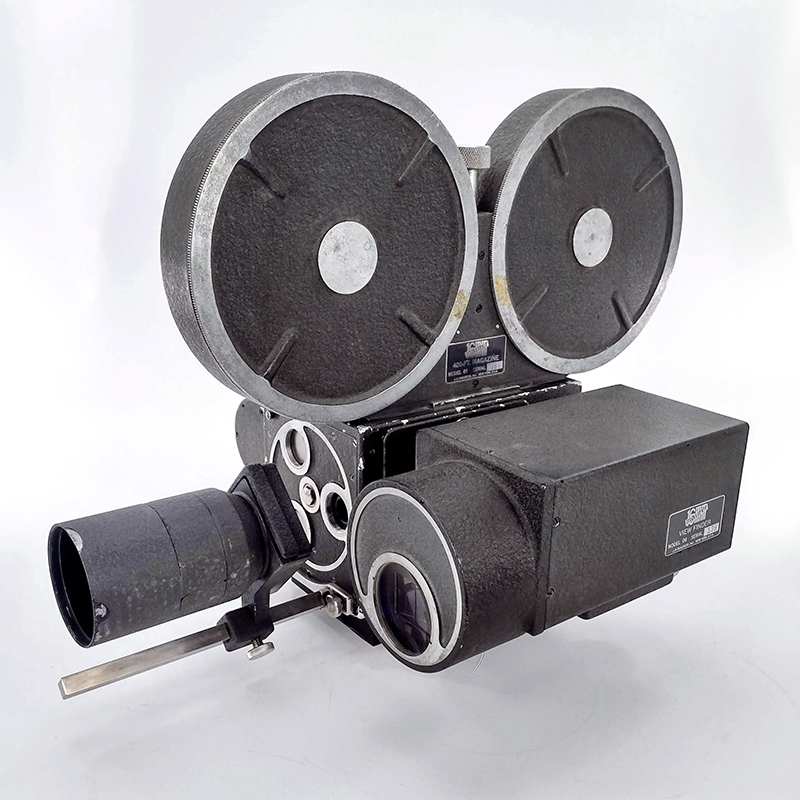
Maurer Model 05
The Maurer 16mm Professional Camera, model 05, has a reputation for being extremely well made and providing outstanding registration on 16mm film. This camera is surprisingly heavy for its size and has just the coolest set of features. The anastigmatically corrected sidefinder, which slides onto a dovetail on the camera door, has a control to adjust the format in the sidefinder, and ingeniously uses a single knob to synchronously focus the sidefinder and adjust it for parallax correction. This camera has not yet been restored.
Auricon CM-72A
The Auricon line of 16mm cameras, audio recording devices, and accessories was launched in the 1940's with the introduction of a sound-on-film recorder. They introduced the Auricon Cine-Voice camera in the 1950's, and it gained wide popularity for news-gathering work due to its compact and portable design. This camera is offered in as-is, unrestored condition.
Auricon CM-72A
The Auricon line of 16mm cameras, audio recording devices, and accessories was launched in the 1940's with the introduction of a sound-on-film recorder. They introduced the Auricon Cine-Voice camera in the 1950's, and it gained wide popularity for news-gathering work due to its compact and portable design. This camera is offered in as-is, unrestored condition.
Auricon CM-72A
The Auricon line of 16mm cameras, audio recording devices, and accessories was launched in the 1940's with the introduction of a sound-on-film recorder. They introduced the Auricon Cine-Voice camera in the 1950's, and it gained wide popularity for news-gathering work due to its compact and portable design. This camera is offered in as-is, unrestored condition.
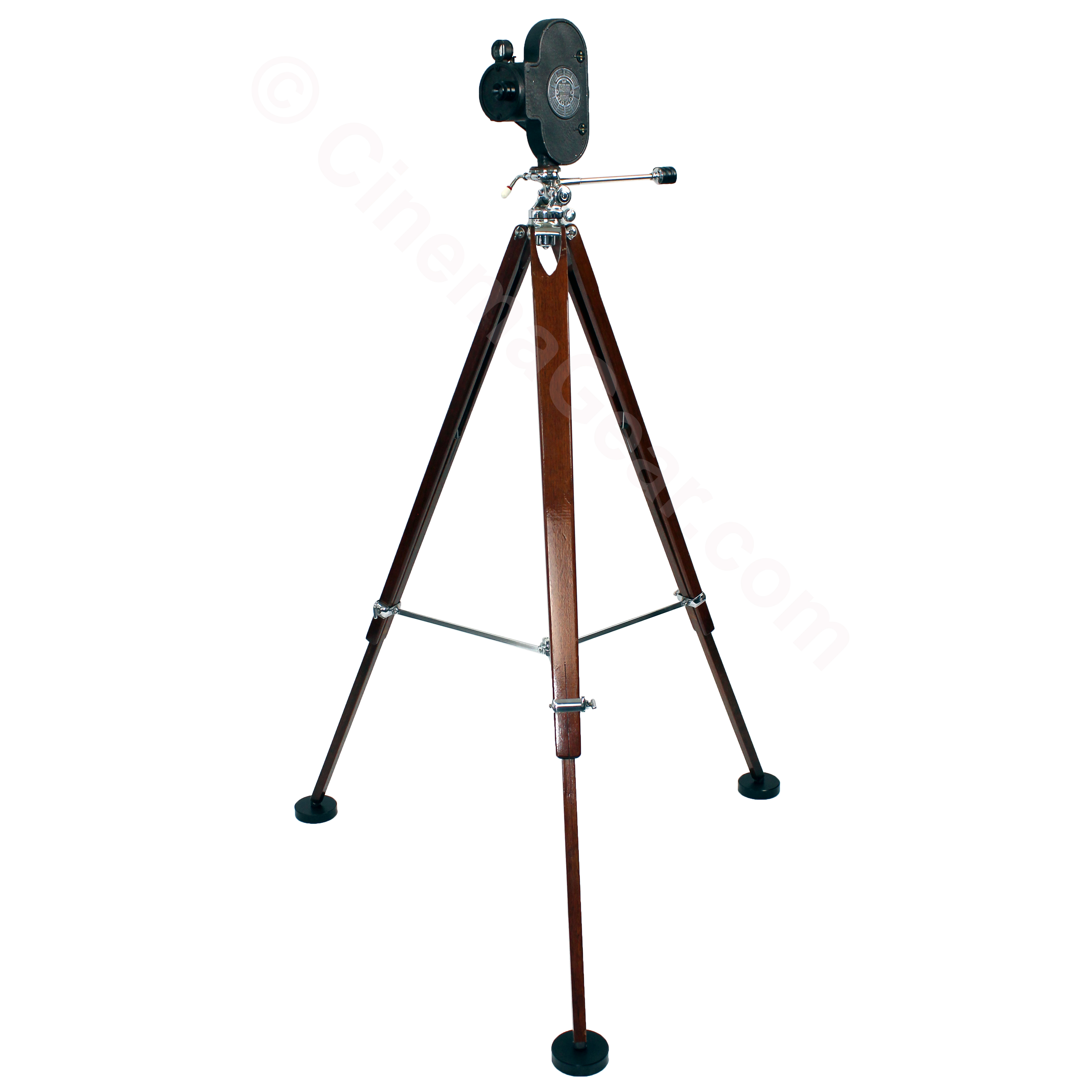
Victor Cine Camera Model 3 with Tripod
The Victor Cine Camera Model 3 is a 16mm spring-motor driven motion picture camera manufactured by the Victor Animatograph Corporation and introduced in 1927. This camera comes complete with a Dallmeyer Triple Anastigmat 1" f2.9 lens and a beautiful wooden tripod with built-in spreader and bubble level. Complete and ready to shoot!
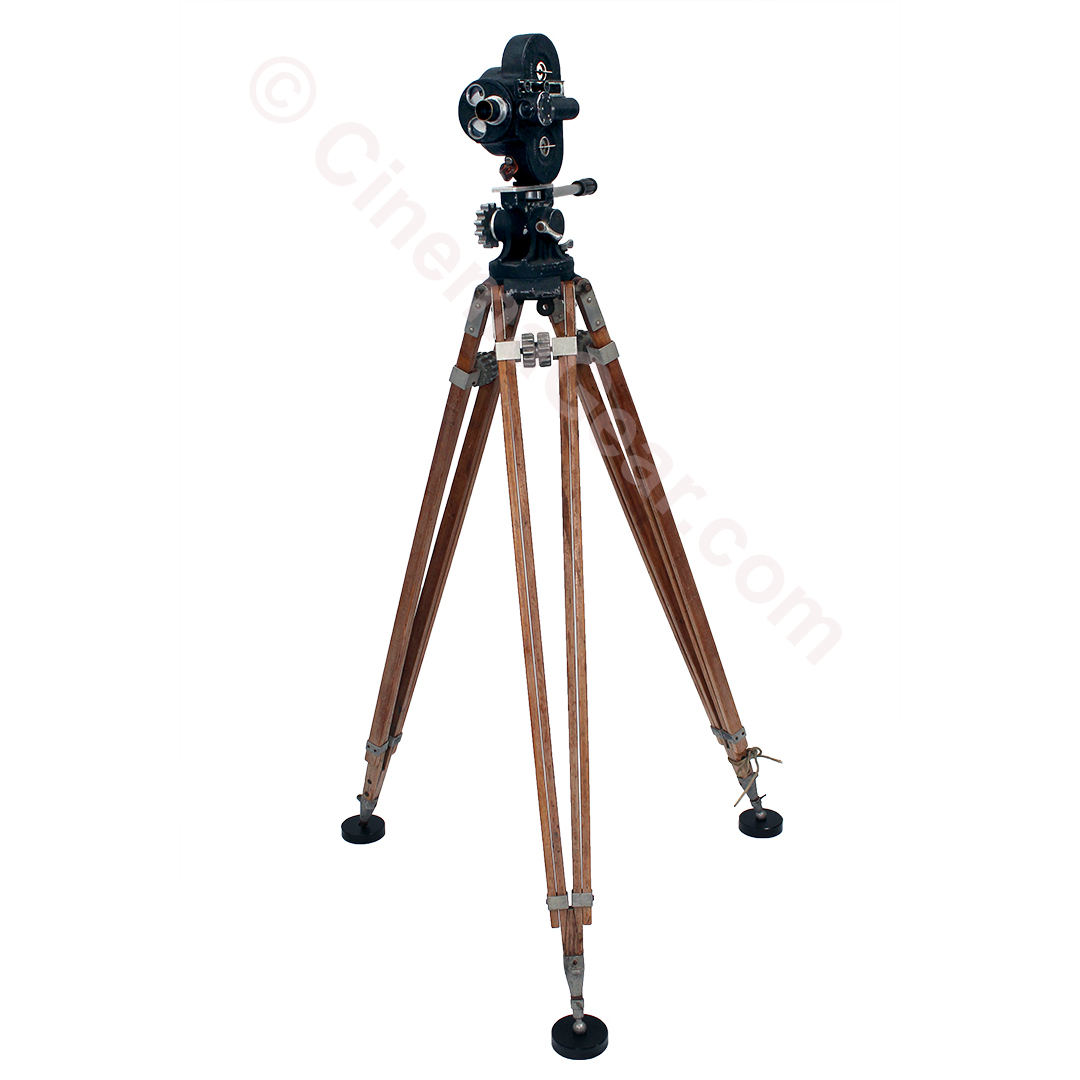
Bell & Howell Filmo Model 70-DA with Tripod
Bell & Howell Filmo 16mm spring motor driven camera with Cooke 1" f1.5 lens. This Filmo is packaged with a wooden Camera Equipment Company Professional Junior tripod and friction head. A complete shooting package! The Bell & Howell Filmo Automatic Cine Camera was introduced to the market in 1923. It was the first spring motor driven 16mm camera on the market and was an immediate hit. The Filmo was produced in numerous variations from 1923 through the 1970's.
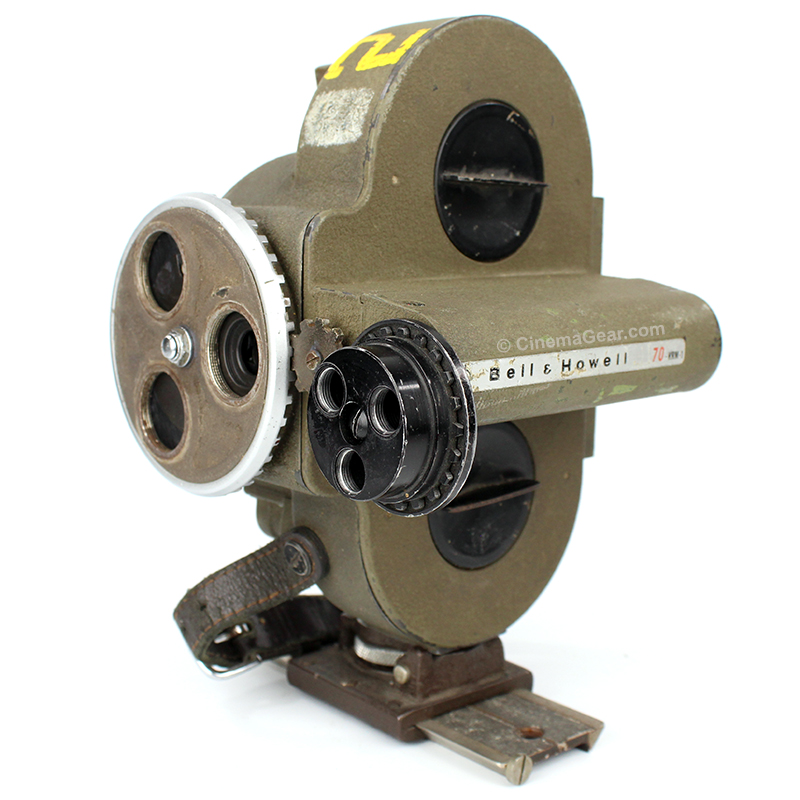
Bell & Howell Filmo Model KRM
The Bell & Howell Filmo Automatic Cine Camera was introduced to the market in 1923. It was the first spring motor driven 16mm camera on the market and was an immediate hit. The Filmo was produced in numerous variations from 1923 through the 1970's.

Bell & Howell Filmo
The Bell & Howell Filmo Automatic Cine Camera was introduced to the market in 1923. It was the first spring motor driven 16mm camera on the market and was an immediate hit. The Filmo was produced in numerous variations through the 1970's.
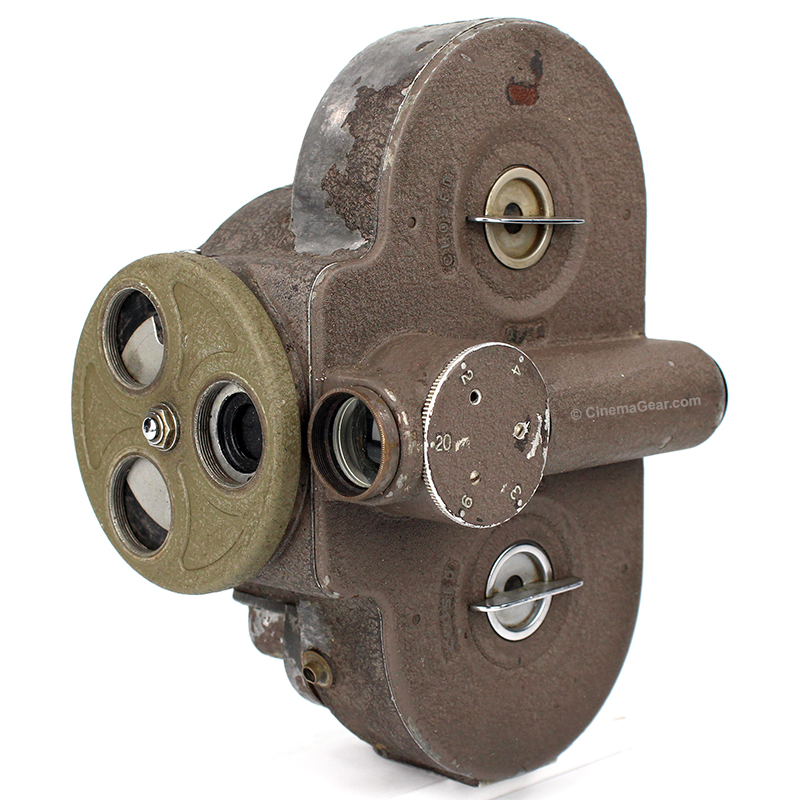
Bell & Howell Filmo Model DA
The Bell & Howell Filmo Automatic Cine Camera was introduced to the market in 1923. It was the first spring motor driven 16mm camera on the market and was an immediate hit. The Filmo was produced in numerous variations through the 1970's.

Cine Kodak Model B
The Cine-Kodak Model B was the second generation 16mm film camera from the Eastman Kodak Company, launched in 1925. It is a spring motor driven camera and was designed to be lightweight, portable, and easy to use.
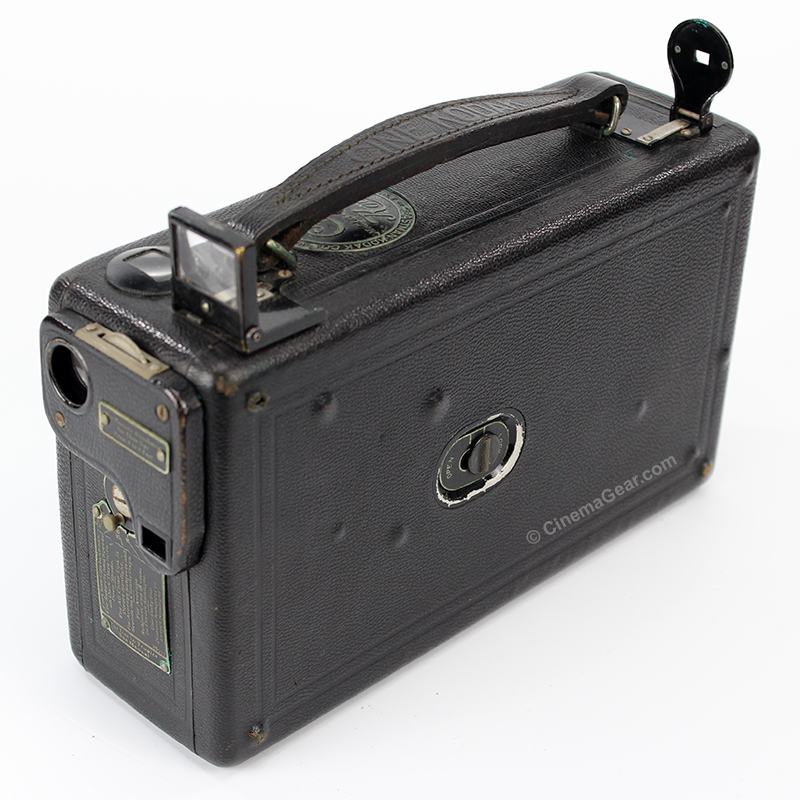
Cine Kodak Model B
The Cine-Kodak Model B was the second generation 16mm film camera from the Eastman Kodak Company, launched in 1925. It is spring motor driven and was designed to be lightweight, portable, and easy to use.
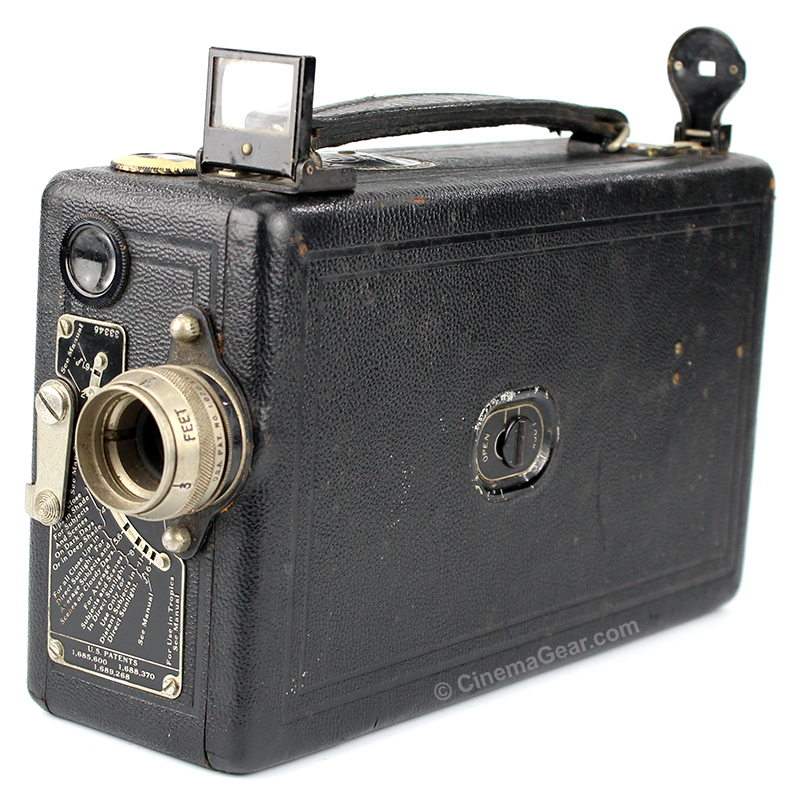
Cine Kodak Model B
The Cine-Kodak Model B was the second generation 16mm film camera from the Eastman Kodak Company, launched in 1925. It is spring motor driven and was designed to be lightweight, portable, and easy to use.
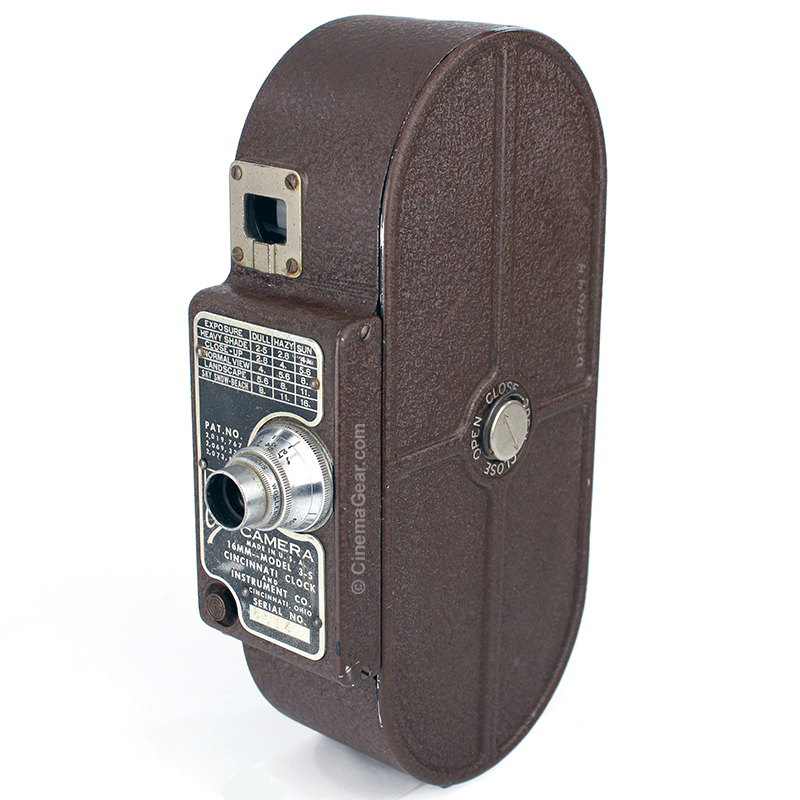
Cinklox Model 3-S
The Cinklox Model 3-S 16mm spring motor driven camera was introduced in 1947 by the Cincinnati Clock and Instrument Company. The camera is designed to take 100' daylight loads and comes with a Wollensak Cine Velostigmat 1" f2.7 coated lens. The Cinklox 3-S camera operates at "normal, fast, and slow-motion" speeds. The Cincinnati Clock and Instrument Company was incorporated in 1916 in Cincinnati, OH. Interestingly, during the 2nd World War, the company made components for gun cameras for the U.S. military. They used this experience to design and manufacture their Cinklox cameras.
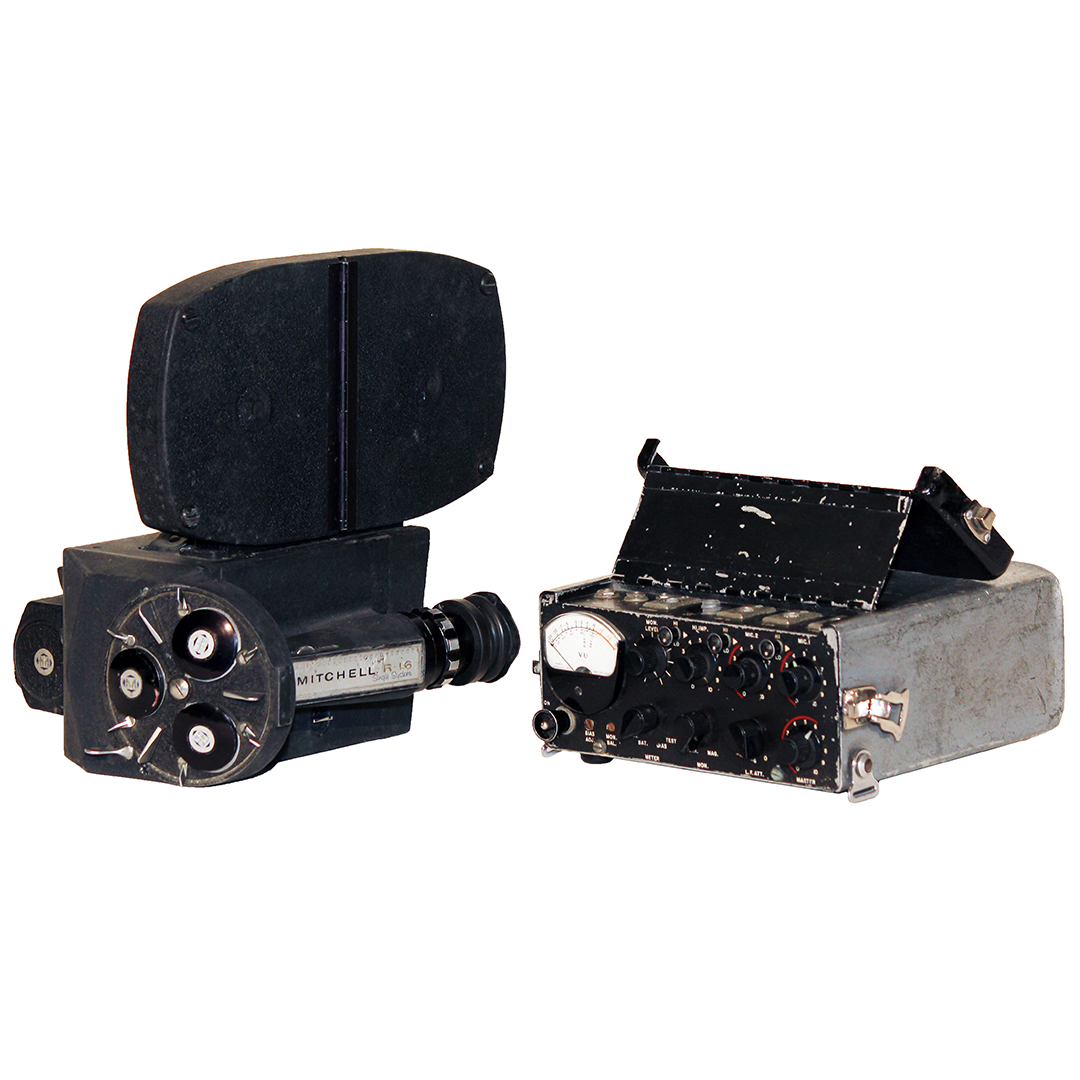
Mitchell SS-R16
The Mitchell SS-R16 is a 16mm single system sound camera that was introduced in 1964. It was originally designed for the CBS television network for use in news-gathering work. This particular camera, serial #120, was manufactured in September 1964.
